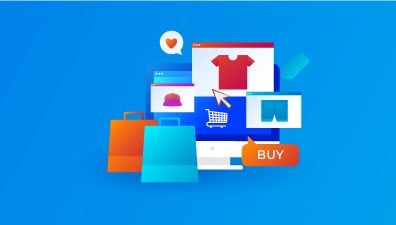Omnichannel solution providers are the architects behind these seamless experiences, offering businesses the tools and technologies needed to unify their customer interactions across multiple channels. These providers play a critical role in enabling businesses to deliver consistent and personalized experiences, regardless of where or how customers choose to engage. By leveraging the capabilities offered by omnichannel solution providers, businesses can not only meet but exceed customer expectations, driving loyalty, and increasing revenue.
As the market continues to evolve, the influence of omnichannel solution providers is expected to grow, with new technologies and strategies emerging to further enhance the customer experience. In this comprehensive blog post, we will delve into the world of omnichannel solution providers, exploring their importance, the current market landscape, and what the future holds for this critical component of modern business strategy.
Table of Contents
Leading Omnichannel Solution Providers
Among the myriad of options available, certain omnichannel solution providers stand out for their innovation, scalability, and ability to meet the diverse needs of modern businesses. These providers offer comprehensive platforms that not only integrate various customer touchpoints but also empower businesses with advanced features such as AI-driven personalization, real-time data analytics, and global commerce capabilities. As a result, these leading omnichannel solution providers have become essential partners for businesses looking to thrive in an increasingly complex and customer-centric environment.
Salesforce Commerce Cloud
Salesforce Commerce Cloud is a leading player in the realm of omnichannel solutions, offering businesses a robust and scalable platform designed to unify customer experiences across all touchpoints. As one of the most recognized names in the industry, Salesforce has leveraged its extensive expertise in CRM to create a comprehensive solution that addresses the complex needs of modern retail and eCommerce operations. Omnichannel solution providers like Salesforce Commerce Cloud are essential for businesses looking to thrive in an increasingly competitive and customer-centric market.
Background and Company Overview
Salesforce, founded in 1999 by Marc Benioff, started as a cloud-based CRM platform and has since grown into one of the most influential technology companies in the world. With a focus on innovation and customer success, Salesforce expanded its offerings over the years to include a wide range of cloud-based solutions, covering areas such as sales, service, marketing, and commerce. Salesforce Commerce Cloud, originally known as Demandware before its acquisition by Salesforce in 2016, is the company’s flagship solution for eCommerce and retail businesses looking to implement an omnichannel strategy.
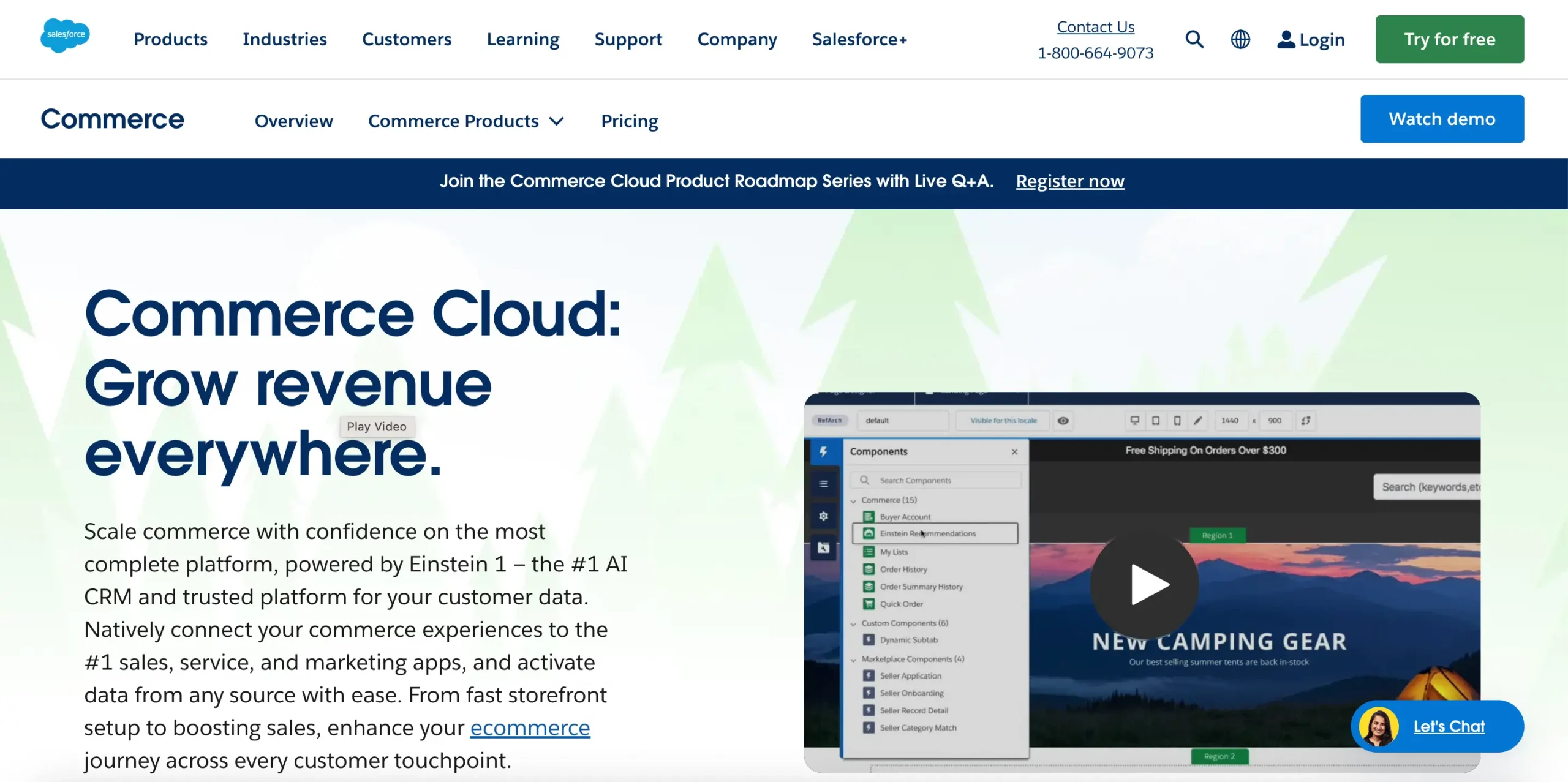
Salesforce Commerce Cloud is designed to help businesses deliver personalized, seamless experiences across all channels, whether online, in-store, or through mobile and social media platforms. By integrating with Salesforce’s broader ecosystem, Commerce Cloud provides businesses with the tools they need to connect with customers at every stage of the buyer journey, from discovery to purchase and beyond.
Key Features and Solutions
Salesforce Commerce Cloud offers a wide array of features and solutions that make it one of the most powerful omnichannel solution providers on the market. These features are designed to help businesses manage their operations more efficiently, engage customers more effectively, and scale their businesses more rapidly.
- Unified Commerce Platform: Salesforce Commerce Cloud provides a unified platform that integrates online and offline channels, allowing businesses to manage their entire commerce ecosystem from a single interface. This includes everything from product catalogs and inventory management to pricing, promotions, and order fulfillment.
- Personalization and AI-Powered Recommendations: A standout feature of Salesforce Commerce Cloud is its AI-powered personalization engine, Einstein. Einstein leverages machine learning to deliver personalized product recommendations, content, and search results to customers based on their behavior and preferences. This level of personalization is crucial for increasing customer engagement and conversion rates, making Salesforce Commerce Cloud a top choice among omnichannel solution providers.
- Mobile-First Capabilities: Recognizing the growing importance of mobile commerce, Salesforce Commerce Cloud is built with mobile-first capabilities. The platform offers responsive design, mobile-optimized checkouts, and mobile apps, ensuring that businesses can deliver a seamless experience to customers on any device.
- Order Management System (OMS): The OMS in Salesforce Commerce Cloud is designed to streamline the order lifecycle across all channels. It enables businesses to manage complex processes such as order routing, inventory allocation, and returns, ensuring that customers receive a consistent and efficient service regardless of where they make their purchase.
- B2B Commerce: In addition to its B2C offerings, Salesforce Commerce Cloud also provides robust solutions for B2B commerce. This includes features such as custom pricing, account-based marketing, and complex order management, making it an ideal choice for businesses that operate in both consumer and business markets.
- Globalization and Multi-Currency Support: Salesforce Commerce Cloud supports globalization, allowing businesses to operate in multiple markets with ease. The platform offers multi-currency and multi-language capabilities, enabling businesses to reach customers around the world while maintaining a consistent brand experience.
- Integration with Salesforce CRM: One of the most significant advantages of Salesforce Commerce Cloud is its seamless integration with Salesforce’s CRM and other cloud solutions. This integration allows businesses to create a 360-degree view of their customers, combining commerce data with marketing, sales, and service data to deliver more personalized and effective interactions.
Pros and Cons
Pros
- Comprehensive Solution: Salesforce Commerce Cloud offers a wide range of features that cover every aspect of eCommerce and retail operations. This makes it a comprehensive solution for businesses looking to manage their entire commerce ecosystem from a single platform.
- Powerful Personalization: The AI-powered personalization capabilities of Salesforce Commerce Cloud are among the best in the industry. The ability to deliver tailored experiences to customers based on their preferences and behavior is a significant advantage in today’s competitive market.
- Scalability: Salesforce Commerce Cloud is highly scalable, making it suitable for businesses of all sizes, from small retailers to global enterprises. The platform’s cloud-based infrastructure ensures that it can handle large volumes of traffic and transactions without compromising performance.
- Seamless Integration with Salesforce Ecosystem: The integration with Salesforce’s CRM and other cloud solutions is a major benefit, allowing businesses to leverage the full power of the Salesforce ecosystem to enhance their omnichannel strategy.
- Global Reach: With multi-currency and multi-language support, Salesforce Commerce Cloud is well-suited for businesses looking to expand their operations globally.
Cons
- Cost: Salesforce Commerce Cloud is one of the more expensive omnichannel solution providers on the market. The platform’s comprehensive features and scalability come at a premium, which may be prohibitive for smaller businesses or startups.
- Complexity: While Salesforce Commerce Cloud offers a wide range of features, the platform can be complex to implement and manage, particularly for businesses that are not already familiar with the Salesforce ecosystem. This complexity may require additional investment in training and support.
- Customization Limitations: Although Salesforce Commerce Cloud is highly customizable, some businesses may find that certain aspects of the platform are less flexible than they would like. Customizing the platform to meet specific needs may require significant development resources.
Pricing
Salesforce Commerce Cloud’s pricing model is based on a combination of subscription fees and transaction-based pricing. This means that businesses pay a base fee for access to the platform, with additional costs based on the volume of transactions processed through the system. The pricing structure is designed to scale with the size of the business, making it accessible to companies with varying levels of revenue.
- Subscription Fees: Salesforce Commerce Cloud charges a subscription fee that provides access to the platform’s core features. This fee varies depending on the specific needs of the business, such as the number of users, the level of support required, and the additional modules or features selected.
- Transaction-Based Fees: In addition to the subscription fee, Salesforce Commerce Cloud charges a percentage of each transaction processed through the platform. This transaction-based pricing model ensures that the cost of the platform scales with the business’s revenue, making it more affordable for smaller businesses while providing the capacity to handle large transaction volumes for larger enterprises.
- Custom Pricing: Given the complexity and scalability of Salesforce Commerce Cloud, pricing is often customized based on the specific needs of the business. Salesforce offers tailored pricing packages that take into account factors such as business size, industry, and the specific features required.
All in all, Salesforce Commerce Cloud stands out as one of the leading omnichannel solution providers, offering a comprehensive and scalable platform designed to meet the needs of modern retail and eCommerce businesses. With its powerful personalization capabilities, seamless integration with the Salesforce ecosystem, and global reach, Salesforce Commerce Cloud provides businesses with the tools they need to deliver exceptional customer experiences across all channels. However, the platform’s cost and complexity may be a consideration for some businesses, particularly those with limited resources or specific customization needs. Nonetheless, for businesses looking for a robust and versatile omnichannel solution, Salesforce Commerce Cloud is a top contender in the market.
Shopify Plus
Shopify Plus has emerged as one of the leading omnichannel solution providers, offering a powerful and scalable platform tailored for high-growth businesses and enterprises. Known for its user-friendly interface and robust eCommerce capabilities, Shopify Plus provides a comprehensive suite of tools designed to help businesses create a seamless shopping experience across online and offline channels. As the enterprise-level solution within the broader Shopify ecosystem, Shopify Plus is engineered to meet the complex needs of large retailers and brands looking to unify their commerce operations under one platform.
Background and Company Overview
Shopify was founded in 2006 by Tobias Lütke, Daniel Weinand, and Scott Lake with the vision of simplifying eCommerce for small businesses. Over the years, Shopify has grown exponentially, becoming one of the most popular eCommerce platforms globally, serving over a million businesses in more than 175 countries. In response to the needs of larger enterprises and rapidly scaling brands, Shopify launched Shopify Plus in 2014. Shopify Plus extends the core capabilities of Shopify with additional features, dedicated support, and greater customization options, making it a compelling choice for high-volume merchants.
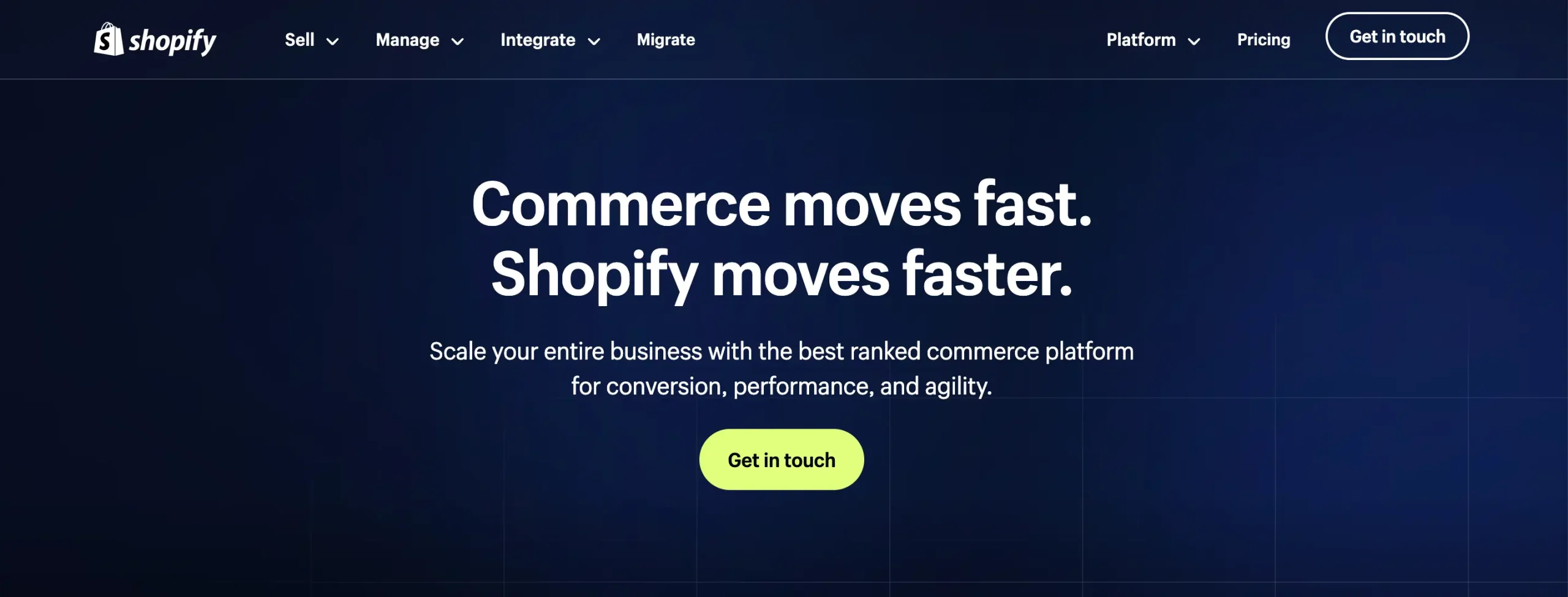
Shopify Plus is designed to provide the flexibility and scalability that large businesses require while maintaining the ease of use that has made Shopify a household name in the eCommerce world. The platform’s modular architecture allows businesses to start small and scale rapidly, integrating various sales channels, including online stores, physical retail locations, social media, and mobile apps, into a unified commerce experience.
Key Features and Solutions
As a leading omnichannel solution provider, Shopify Plus offers a wide array of features and solutions that empower businesses to manage their entire commerce ecosystem efficiently. These features are designed to support everything from product management and marketing to order fulfillment and customer service, ensuring that businesses can deliver a consistent and engaging experience across all channels.
- Omnichannel Commerce: Shopify Plus allows businesses to sell across multiple channels from a single platform. This includes online stores, brick-and-mortar retail locations, social media platforms like Facebook and Instagram, online marketplaces like Amazon and eBay, and mobile apps. The platform’s centralized management system ensures that product listings, inventory, and orders are synchronized across all channels, providing a seamless shopping experience for customers.
- Scalability and Performance: One of the key advantages of Shopify Plus is its ability to handle high volumes of traffic and transactions without compromising performance. The platform is built on a robust infrastructure that supports large-scale operations, ensuring fast page load times, high uptime, and the capacity to handle significant spikes in traffic, such as during major sales events.
- Customization and Flexibility: Shopify Plus offers extensive customization options, allowing businesses to tailor their online stores to match their brand identity and meet specific operational needs. The platform supports custom themes, scripts, and APIs, giving businesses the flexibility to create unique shopping experiences. Additionally, Shopify Plus provides access to the platform’s underlying code, enabling deeper customization and integration with third-party systems.
- Automated Workflows and Task Automation: Shopify Plus includes a powerful automation tool called Shopify Flow, which enables businesses to automate a wide range of tasks, from order management and inventory updates to customer segmentation and marketing campaigns. This automation helps businesses save time and reduce manual errors, allowing them to focus on more strategic activities.
- Advanced Analytics and Reporting: Shopify Plus provides advanced analytics and reporting tools that give businesses deep insights into their sales performance, customer behavior, and marketing effectiveness. These tools allow businesses to track key metrics, generate custom reports, and make data-driven decisions to optimize their omnichannel strategies.
- Global Commerce Capabilities: Shopify Plus is designed to support global commerce, with features such as multi-currency, multi-language, and international tax management. This allows businesses to expand their reach to new markets while maintaining a consistent brand experience across different regions.
- Dedicated Support and Resources: Shopify Plus customers benefit from dedicated support, including a Launch Engineer to assist with the initial setup and ongoing technical support from the Shopify Plus Merchant Success team. This level of support ensures that businesses can maximize the value of the platform and resolve any issues quickly.
Pros and Cons
Pros
- User-Friendly Interface: One of the biggest advantages of Shopify Plus is its intuitive, user-friendly interface. Even though it is an enterprise-level solution, the platform remains easy to use, allowing businesses to manage their operations without the need for extensive technical expertise.
- Scalability: Shopify Plus is highly scalable, making it suitable for businesses of all sizes, from high-growth startups to large enterprises. The platform’s robust infrastructure ensures that it can handle large volumes of traffic and transactions, which is essential for businesses experiencing rapid growth or seasonal spikes in demand.
- Omnichannel Integration: Shopify Plus excels in integrating multiple sales channels, allowing businesses to manage online stores, physical retail locations, and social media sales from a single platform. This integration ensures a consistent customer experience across all channels and simplifies the management of omnichannel operations.
- Customization and Flexibility: The platform’s extensive customization options allow businesses to create a unique and tailored shopping experience that aligns with their brand identity. Whether through custom themes, scripts, or integrations, Shopify Plus provides the flexibility needed to meet specific business requirements.
- Strong Ecosystem and App Marketplace: Shopify Plus has a vast ecosystem of third-party apps and integrations available through the Shopify App Store. This allows businesses to extend the functionality of their stores with specialized tools for marketing, customer service, inventory management, and more.
Cons
- Cost: Shopify Plus is more expensive than Shopify’s standard plans, which may be a consideration for smaller businesses or those with tight budgets. The platform’s pricing is designed to reflect its enterprise-level features and scalability, but this comes with a higher price tag.
- Transaction Fees: While Shopify Plus offers competitive pricing, businesses that do not use Shopify Payments as their payment gateway may incur additional transaction fees. These fees can add up, particularly for businesses with high sales volumes.
- Limited Backend Flexibility: While Shopify Plus offers extensive front-end customization, some businesses may find the backend less flexible compared to open-source platforms. Customizing certain aspects of the backend may require development resources, which could be a limitation for businesses with specific operational needs.
- Learning Curve for Advanced Features: Although Shopify Plus is user-friendly, some of its more advanced features, such as automation workflows and custom scripting, may have a learning curve for users who are not familiar with these tools. Businesses may need to invest time in training or hire specialists to fully leverage these features.
Pricing
Shopify Plus operates on a custom pricing model, designed to accommodate the unique needs of enterprise-level businesses. The pricing is based on several factors, including the size of the business, the volume of sales, and the specific features required. While Shopify Plus does not publish a fixed price, here are some key aspects of the pricing structure:
- Base Subscription Fee: Shopify Plus charges a base subscription fee, which typically starts at around $2,300 per month. This fee provides access to the core features of Shopify Plus, including multi-channel commerce, customization options, and dedicated support.
- Transaction Fees: Businesses using Shopify Payments as their payment gateway benefit from very low transaction fees on sales. However, those who choose to use a third-party payment gateway may be subject to additional transaction fees. For detailed information on these fees, you need to contact Shopify directly or work with a Shopify agency.
- Additional Costs: Depending on the specific needs of the business, additional costs may be incurred for custom development, third-party app integrations, and additional services such as advanced analytics or internationalization features. Shopify Plus offers a flexible pricing model, allowing businesses to choose the features and services that best meet their needs.
- Custom Pricing Packages: Shopify Plus offers custom pricing packages tailored to the specific requirements of each business. These packages are designed to be scalable, ensuring that the platform can grow alongside the business. Businesses interested in Shopify Plus are encouraged to contact Shopify directly to discuss their needs and receive a personalized quote.
All in all, Shopify Plus is a leading omnichannel solution provider that offers a powerful, scalable platform designed to meet the needs of high-growth businesses and enterprises. With its user-friendly interface, extensive customization options, and strong multi-channel integration capabilities, Shopify Plus provides businesses with the tools they need to deliver a seamless and consistent customer experience across all channels. While the platform’s cost and transaction fees may be a consideration for some businesses, its scalability and robust feature set make it a compelling choice for those looking to unify their commerce operations and drive growth.
Oracle Retail
Oracle Retail stands as a powerful and sophisticated solution within the realm of omnichannel solution providers, offering a comprehensive suite of tools and technologies designed to meet the demands of modern retail enterprises. Known for its deep integration capabilities and advanced data analytics, Oracle Retail provides businesses with the ability to unify their operations, optimize customer experiences, and drive revenue across multiple channels. As part of Oracle Corporation, one of the largest technology companies in the world, Oracle Retail benefits from the company’s extensive resources, innovation, and global reach.
Background and Company Overview
Oracle Corporation, founded in 1977 by Larry Ellison, Bob Miner, and Ed Oates, has grown to become one of the most significant players in the global technology industry. The company is renowned for its enterprise software products and services, including database management systems, cloud solutions, and ERP software. Oracle Retail is a key division within Oracle Corporation, focusing specifically on providing retail solutions that cater to the unique challenges and opportunities within the industry.
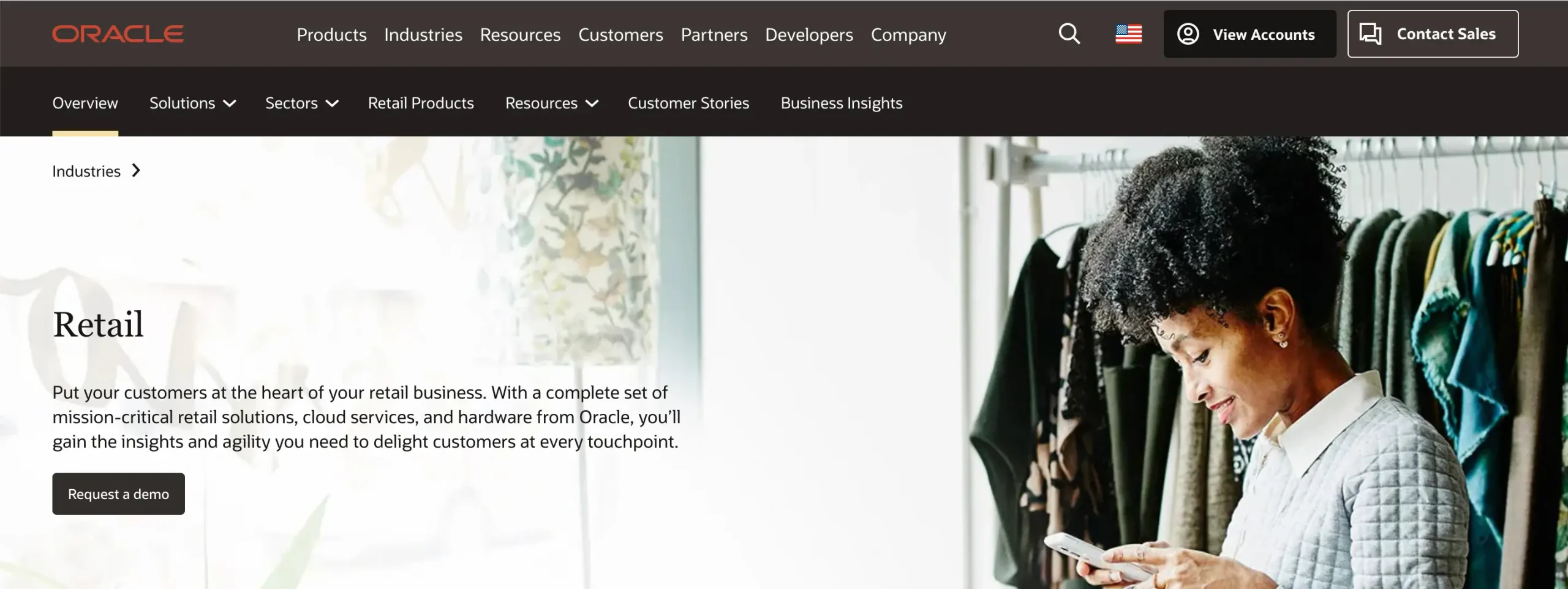
Oracle Retail was established to offer retailers a robust platform that could handle the complexities of modern retail operations. The platform is designed to support large-scale enterprises with extensive operations across multiple regions and channels. Oracle Retail’s solutions are built on Oracle’s robust technology stack, ensuring that businesses have access to cutting-edge tools for data management, analytics, customer engagement, and supply chain optimization.
Oracle Retail serves a diverse range of industries within the retail sector, including fashion, grocery, electronics, and department stores. The platform is particularly well-suited for businesses that require a high level of customization, scalability, and integration with other enterprise systems. With a focus on delivering a seamless omnichannel experience, Oracle Retail enables businesses to unify their customer interactions, streamline operations, and gain deeper insights into their performance.
Key Features and Solutions
As a leading omnichannel solution provider, Oracle Retail offers an extensive array of features and solutions designed to empower businesses to manage their entire retail ecosystem efficiently. These features are geared towards enhancing customer experiences, optimizing supply chain operations, and enabling data-driven decision-making.
- Omnichannel Commerce Platform: Oracle Retail provides a robust omnichannel commerce platform that allows businesses to manage their online and offline sales channels from a single, integrated system. This platform supports various sales channels, including eCommerce websites, mobile apps, physical stores, and marketplaces, ensuring a consistent and seamless shopping experience for customers.
- Retail Analytics and Business Intelligence: One of Oracle Retail’s standout features is its advanced analytics and business intelligence capabilities. The platform leverages Oracle’s powerful data analytics tools to provide retailers with deep insights into customer behavior, sales trends, inventory levels, and operational efficiency. These insights enable businesses to make data-driven decisions that enhance customer experiences and drive growth.
- Customer Engagement and Loyalty Management: Oracle Retail offers a comprehensive suite of tools for managing customer engagement and loyalty programs. The platform enables businesses to create personalized marketing campaigns, track customer interactions across all channels, and manage loyalty programs that reward customers for their purchases and brand engagement. This level of personalization helps businesses build stronger relationships with their customers and increase customer retention.
- Inventory and Supply Chain Management: Effective inventory and supply chain management are critical to the success of any retail business, and Oracle Retail excels in this area. The platform provides real-time visibility into inventory levels across all channels, allowing businesses to optimize their stock levels, reduce the risk of stockouts or overstocking, and improve order fulfillment times. Additionally, Oracle Retail’s supply chain management tools help businesses manage their suppliers, logistics, and distribution networks more efficiently.
- Store Operations and Point of Sale (POS) Systems: Oracle Retail includes powerful tools for managing store operations and point of sale (POS) systems. The platform’s POS solutions are designed to provide a fast, reliable, and secure checkout experience, while also integrating with the broader retail ecosystem to ensure that customer data, inventory information, and sales transactions are synchronized across all channels. This integration helps businesses deliver a consistent and efficient in-store experience.
- Merchandising and Assortment Planning: Oracle Retail offers advanced tools for merchandising and assortment planning, enabling businesses to optimize their product offerings based on customer demand, market trends, and inventory levels. These tools help retailers ensure that the right products are available at the right time, in the right locations, maximizing sales and customer satisfaction.
- Globalization and Multi-Currency Support: Oracle Retail is designed to support global retail operations, with features such as multi-currency, multi-language, and international tax management. This allows businesses to operate seamlessly across different regions and markets, providing a consistent brand experience to customers worldwide.
Pros and Cons
As with any omnichannel solution provider, Oracle Retail has its strengths and weaknesses. Understanding these pros and cons can help businesses determine whether this platform is the right fit for their specific needs.
Pros
- Comprehensive and Integrated Platform: Oracle Retail offers a comprehensive and integrated platform that covers all aspects of retail operations, from omnichannel commerce and customer engagement to inventory management and analytics. This level of integration ensures that businesses can manage their entire retail ecosystem from a single platform, reducing complexity and improving efficiency.
- Advanced Analytics and Data-Driven Decision Making: One of Oracle Retail’s key strengths is its advanced analytics and business intelligence capabilities. The platform’s ability to provide deep insights into customer behavior, sales performance, and operational efficiency is invaluable for businesses looking to optimize their operations and drive growth.
- Scalability and Customization: Oracle Retail is highly scalable, making it suitable for large enterprises with extensive operations across multiple regions. The platform also offers a high degree of customization, allowing businesses to tailor the solution to meet their specific needs and requirements.
- Global Reach and Multi-Currency Support: Oracle Retail’s global capabilities make it an excellent choice for businesses that operate in multiple regions or are looking to expand internationally. The platform’s support for multi-currency, multi-language, and international tax management ensures that businesses can provide a consistent experience to customers worldwide.
- Strong Security and Compliance: Oracle Retail benefits from Oracle Corporation’s strong focus on security and compliance. The platform is designed to meet the highest standards of data protection and regulatory compliance, providing businesses with the assurance that their customer data and operations are secure.
Cons
- Complexity and Implementation Time: Oracle Retail’s comprehensive features and high level of customization can make the platform complex to implement and manage. Businesses may need to invest significant time and resources in the implementation process, particularly if they are integrating the platform with existing systems or customizing it to meet specific needs.
- Cost: Oracle Retail is one of the more expensive omnichannel solution providers on the market. The platform’s extensive features and scalability come at a premium, which may be prohibitive for smaller businesses or those with limited budgets.
- Learning Curve: The complexity of Oracle Retail’s features may present a learning curve for users, particularly those who are not familiar with enterprise-level retail systems. Businesses may need to invest in training or hire specialized staff to fully leverage the platform’s capabilities.
- Dependence on Oracle Ecosystem: While Oracle Retail’s integration with Oracle’s broader ecosystem is a strength, it also means that businesses may become dependent on Oracle’s suite of products and services. This dependence could limit flexibility or increase costs if businesses need to integrate with non-Oracle systems.
Pricing
Oracle Retail’s pricing is tailored to the specific needs of each business, and as such, the company does not publish fixed prices. Instead, Oracle offers a custom pricing model based on factors such as the size of the business, the complexity of the implementation, the specific features required, and the level of support needed. Here are some key aspects of Oracle Retail’s pricing structure:
- Custom Pricing Packages: Oracle Retail offers custom pricing packages that are designed to meet the unique requirements of each business. These packages take into account the size and scope of the business’s operations, the specific features and modules selected, and the level of support required. Businesses are encouraged to contact Oracle directly to discuss their needs and receive a personalized quote.
- Subscription Fees: Oracle Retail typically charges a subscription fee for access to the platform’s core features. This fee may vary depending on the specific modules selected, the number of users, and the scale of the business’s operations.
- Implementation and Integration Costs: Given the complexity and customization options available with Oracle Retail, businesses may incur additional costs for implementation and integration services. These costs can vary widely depending on the scope of the project and the level of customization required.
- Support and Maintenance Fees: Oracle Retail offers various levels of support, ranging from standard technical support to premium services with dedicated account managers. The cost of support and maintenance may vary depending on the level of service selected.
Oracle Retail is a leading omnichannel solution provider that offers a powerful, integrated platform designed to meet the needs of large retail enterprises. With its advanced analytics, comprehensive feature set, and global capabilities, Oracle Retail provides businesses with the tools they need to deliver a seamless and consistent customer experience across all channels. However, the platform’s complexity, cost, and implementation time may be considerations for some businesses. Nonetheless, for enterprises seeking a robust and scalable solution that can handle the demands of modern retail operations, Oracle Retail remains a top choice in the market.
Adobe Commerce (Magento)
Adobe Commerce, formerly known as Magento, is a prominent name in the realm of omnichannel solution providers, offering a versatile and powerful platform that caters to the diverse needs of businesses across various industries. Known for its flexibility, scalability, and extensive customization options, Adobe Commerce provides a comprehensive solution for businesses looking to deliver a unified and seamless customer experience across multiple channels. As part of Adobe’s expansive ecosystem, Adobe Commerce benefits from deep integration with other Adobe products, enabling businesses to create rich, personalized, and engaging shopping experiences.
Background and Company Overview
Magento was originally launched in 2008 as an open-source eCommerce platform and quickly became one of the most popular solutions for online merchants due to its flexibility and extensive feature set. In 2018, Adobe acquired Magento, rebranding it as Adobe Commerce and integrating it into the Adobe Experience Cloud. This acquisition allowed Adobe to expand its offerings in the digital commerce space, combining Magento’s robust eCommerce capabilities with Adobe’s expertise in content creation, marketing, and customer experience management.
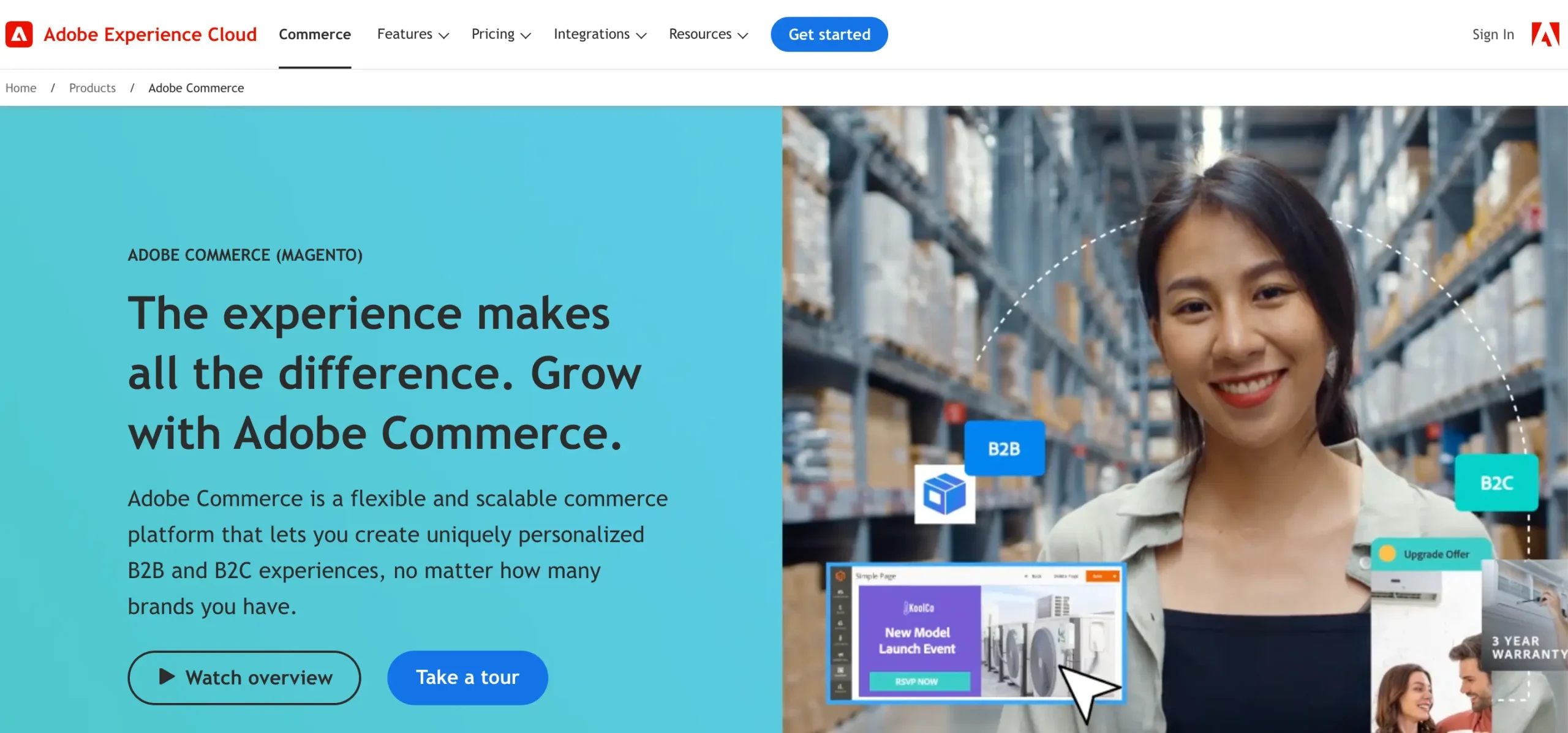
Adobe Commerce is designed to serve businesses of all sizes, from small startups to large enterprises. Its modular architecture allows businesses to customize the platform extensively, tailoring it to their specific needs and industry requirements. With a strong focus on flexibility and scalability, Adobe Commerce enables businesses to manage complex product catalogs, integrate with multiple sales channels, and provide personalized customer experiences. The platform is particularly well-suited for businesses that require a high level of customization and control over their eCommerce operations.
Key Features and Solutions
As a leading omnichannel solution provider, Adobe Commerce offers a wide range of features and solutions that empower businesses to manage their entire eCommerce ecosystem effectively. These features are designed to support everything from product management and customer engagement to analytics and global commerce.
- Flexible and Scalable Architecture:
- One of the standout features of Adobe Commerce is its flexible and scalable architecture. The platform’s open-source foundation allows businesses to customize virtually every aspect of their online store, from the front-end user experience to back-end operations. This flexibility is particularly valuable for businesses with unique requirements or those operating in niche markets.
- Multi-Channel Commerce:
- Adobe Commerce supports multi-channel commerce, enabling businesses to sell across various online and offline channels. This includes integration with popular marketplaces like Amazon and eBay, social media platforms like Facebook and Instagram, and physical retail stores. The platform’s centralized management system ensures that product information, inventory, and orders are synchronized across all channels, providing a seamless experience for customers.
- Advanced Personalization and AI-Driven Recommendations:
- Adobe Commerce leverages Adobe Sensei, Adobe’s AI and machine learning framework, to deliver advanced personalization and product recommendations. This feature allows businesses to create personalized shopping experiences by analyzing customer behavior, preferences, and purchase history. The AI-driven recommendations can be used to increase customer engagement, improve conversion rates, and boost sales.
- Robust Product and Catalog Management:
- Adobe Commerce offers comprehensive tools for managing large and complex product catalogs. Businesses can easily organize products into categories, set up multiple product attributes, and manage inventory across multiple locations. The platform also supports configurable products, allowing businesses to offer customizable options to their customers.
- Content Management and Experience-Driven Commerce:
- Adobe Commerce is deeply integrated with Adobe Experience Manager, allowing businesses to create and manage rich content alongside their eCommerce operations. This integration enables experience-driven commerce, where content and commerce are seamlessly combined to deliver engaging shopping experiences. Businesses can use Adobe’s tools to create personalized landing pages, product descriptions, and marketing campaigns that resonate with their target audience.
- Global Commerce Capabilities:
- Adobe Commerce is designed to support global operations, with features such as multi-currency, multi-language, and regional tax management. This makes it an ideal solution for businesses looking to expand their reach into international markets while maintaining a consistent brand experience across different regions.
- Advanced Analytics and Reporting:
- Adobe Commerce provides powerful analytics and reporting tools that give businesses deep insights into their eCommerce performance. The platform’s analytics capabilities include customer segmentation, sales performance tracking, and detailed reports on customer behavior. These insights allow businesses to make data-driven decisions that optimize their operations and improve customer experiences.
- Integration with Adobe Experience Cloud:
- One of the key advantages of Adobe Commerce is its integration with Adobe Experience Cloud, a suite of tools designed for marketing, analytics, advertising, and content management. This integration allows businesses to leverage Adobe’s full range of capabilities to create a unified and personalized customer experience across all touchpoints.
Pros and Cons
Pros
- Extensive Customization and Flexibility: Adobe Commerce is highly customizable, allowing businesses to tailor the platform to their unique requirements. The open-source architecture provides the flexibility needed to build bespoke solutions, making it an excellent choice for businesses with specific operational needs or those operating in specialized markets.
- Scalability: The platform’s robust architecture is designed to scale with the growth of the business, making it suitable for both small businesses and large enterprises. Adobe Commerce can handle large product catalogs, high traffic volumes, and complex multi-channel operations, ensuring that businesses can expand without outgrowing the platform.
- Integration with Adobe Ecosystem: The seamless integration with Adobe Experience Cloud and other Adobe products is a significant advantage, allowing businesses to create a cohesive and personalized customer experience across all channels. This integration enables businesses to combine content and commerce effectively, driving engagement and conversions.
- Advanced Personalization and AI Capabilities: Adobe Commerce’s use of Adobe Sensei for AI-driven personalization and recommendations is a major strength. The ability to deliver personalized experiences at scale is essential in today’s competitive eCommerce landscape, and Adobe Commerce provides the tools needed to achieve this.
- Strong Community and Marketplace: Adobe Commerce benefits from a strong community of developers and a vast marketplace of extensions and plugins. This ecosystem provides businesses with access to a wide range of third-party tools and services that can extend the functionality of the platform and support specific business needs.
Cons
- Complexity and Implementation Time: Adobe Commerce’s extensive features and customization options can make the platform complex to implement and manage. Businesses may need to invest significant time and resources in the initial setup, particularly if they are integrating the platform with existing systems or customizing it to meet specific requirements.
- Cost: Adobe Commerce is one of the more expensive omnichannel solution providers, particularly when considering the cost of licensing, implementation, and ongoing maintenance. While the platform offers a high level of value, the cost may be prohibitive for smaller businesses or those with limited budgets.
- Learning Curve: The platform’s advanced features and customization capabilities may present a learning curve for users, particularly those who are not familiar with eCommerce platforms or Adobe’s suite of products. Businesses may need to invest in training or hire specialized staff to fully leverage the platform’s capabilities.
- Dependence on Adobe Ecosystem: While the integration with Adobe’s ecosystem is a strength, it can also be a limitation for businesses that do not use or plan to use other Adobe products. Businesses that require integration with non-Adobe systems may find this dependency challenging or may incur additional costs for custom integrations.
Pricing
Adobe Commerce offers a flexible pricing model that is designed to accommodate the unique needs of each business. The pricing structure is based on several factors, including the size of the business, the complexity of the implementation, the specific features required, and the level of support needed. Here are some key aspects of Adobe Commerce’s pricing:
- Base Licensing Fees: Adobe Commerce charges a base licensing fee that provides access to the platform’s core features. This fee varies depending on the size of the business and the specific version of Adobe Commerce being used (e.g., Adobe Commerce vs. Adobe Commerce Cloud). The base licensing fee typically starts in the range of $22,000 to $50,000/year, depending on the scope and scale of the business’s operations.
- Cloud Hosting and Maintenance: For businesses that opt for Adobe Commerce Cloud, additional costs are associated with cloud hosting, maintenance, and support. Adobe Commerce Cloud provides a fully managed service that includes cloud infrastructure, automated updates, and enhanced security, making it a suitable option for businesses looking for a more hands-off approach to platform management.
- Implementation and Customization Costs: Given the platform’s extensive customization options, businesses may incur additional costs for implementation and customization services. These costs can vary widely depending on the level of customization required, the need for third-party integrations, and the complexity of the project.
- Support and Training Fees: Adobe Commerce offers various levels of support, ranging from standard technical support to premium services with dedicated account managers and 24/7 support. The cost of support and training may vary depending on the level of service selected and the specific needs of the business.
- Additional Costs for Extensions and Plugins: Businesses may also incur additional costs for purchasing and integrating third-party extensions and plugins from the Adobe Commerce Marketplace. These extensions can enhance the functionality of the platform, but they may come with licensing fees or subscription costs.
Overall, Adobe Commerce (Magento) is a leading omnichannel solution provider that offers a powerful and flexible platform designed to meet the needs of businesses across various industries. With its extensive customization options, scalability, and integration with Adobe’s ecosystem, Adobe Commerce provides businesses with the tools they need to create a seamless and personalized customer experience across all channels. However, the platform’s complexity, cost, and learning curve may be considerations for some businesses. Nonetheless, for enterprises seeking a robust and versatile solution that can handle the demands of modern eCommerce operations, Adobe Commerce remains a top choice in the market.
SAP Commerce Cloud
SAP Commerce Cloud is one of the most robust and comprehensive platforms available in the market today, known for its ability to support complex, large-scale business operations across multiple channels. As a flagship product within SAP’s suite of enterprise software solutions, SAP Commerce Cloud is tailored to meet the needs of businesses looking to deliver consistent, personalized, and seamless customer experiences in an omnichannel environment. As one of the leading omnichannel solution providers, SAP Commerce Cloud offers a wide range of features designed to help businesses optimize their commerce operations, integrate data across channels, and engage customers effectively.
Background and Company Overview
SAP (Systems, Applications, and Products in Data Processing) is a global leader in enterprise software, founded in 1972 in Germany. Over the decades, SAP has built a reputation for delivering cutting-edge software solutions that help businesses streamline their operations, manage their resources more effectively, and drive growth. SAP Commerce Cloud, originally known as SAP Hybris before its rebranding, is a part of SAP’s broader Customer Experience (CX) suite. This platform is designed to provide businesses with the tools they need to manage their digital commerce operations across various channels, ensuring a seamless and integrated customer experience.
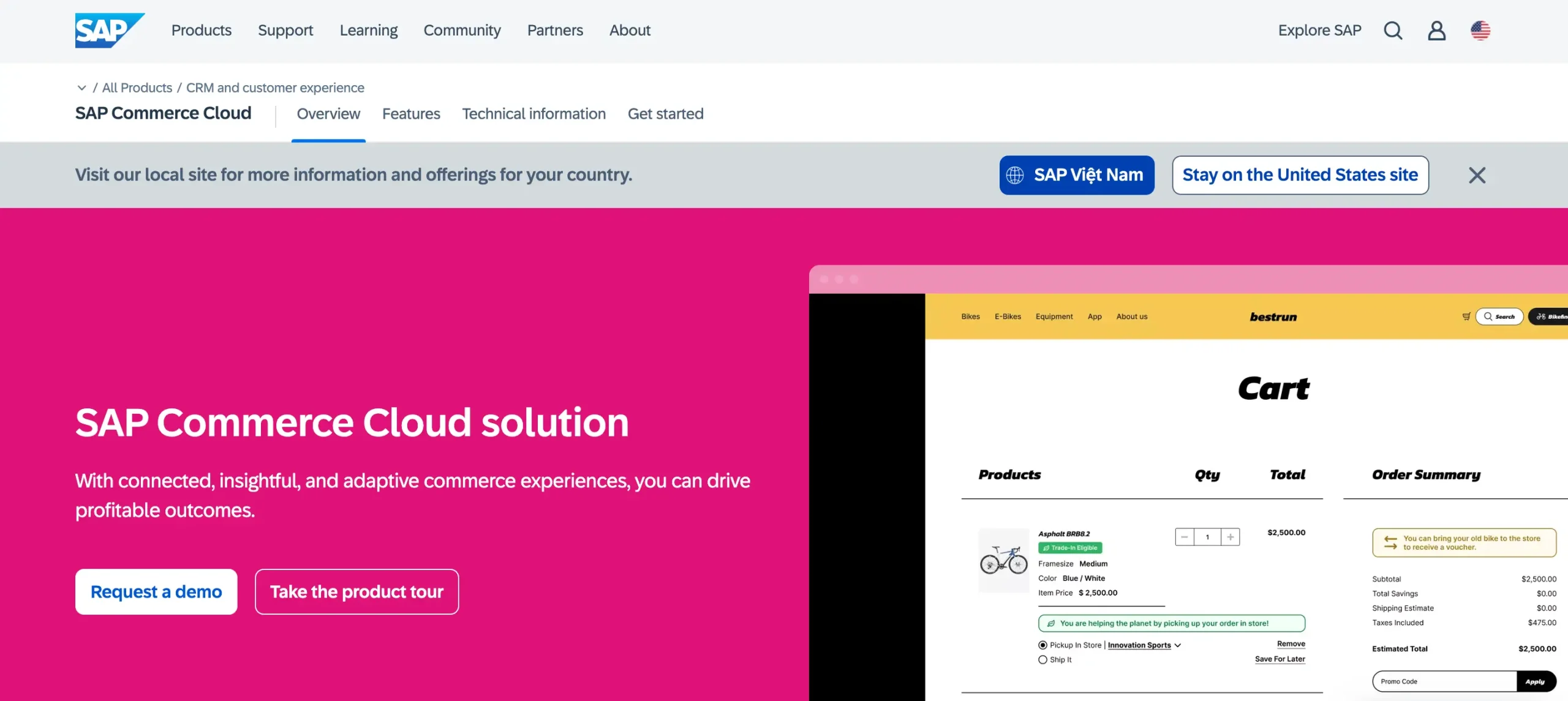
SAP Commerce Cloud is particularly well-suited for large enterprises and businesses operating in complex, multi-channel environments. It offers deep integration capabilities with other SAP products, such as SAP S/4HANA and SAP Customer Data Cloud, making it a powerful choice for businesses looking to unify their commerce, marketing, sales, and service operations. The platform’s scalability and flexibility also make it an ideal solution for businesses that require robust performance and extensive customization options.
Key Features and Solutions
SAP Commerce Cloud, as a leading omnichannel solution provider, offers a comprehensive suite of features and solutions designed to help businesses manage every aspect of their commerce operations. These features are aimed at enhancing customer experiences, optimizing business processes, and providing the scalability needed to support large, complex enterprises.
- Omnichannel Commerce Capabilities: SAP Commerce Cloud supports a true omnichannel commerce experience, allowing businesses to integrate their online and offline sales channels seamlessly. This includes managing eCommerce websites, mobile apps, in-store point of sale (POS) systems, social media platforms, and marketplaces from a single platform. The platform ensures that product information, inventory levels, pricing, and promotions are consistent across all channels, providing customers with a unified shopping experience.
- Personalization and Contextual Marketing: Personalization is a core feature of SAP Commerce Cloud, enabling businesses to deliver tailored experiences to customers based on their behavior, preferences, and purchase history. The platform’s powerful personalization engine uses real-time data to create targeted offers, recommendations, and content that resonate with individual customers. This level of personalization helps businesses increase customer engagement, conversion rates, and loyalty.
- Advanced Product Content Management (PCM): SAP Commerce Cloud offers robust product content management capabilities, allowing businesses to manage complex product catalogs with ease. The platform supports rich product content, including detailed descriptions, images, videos, and technical specifications. Businesses can easily manage product variations, such as size, color, and configuration options, and distribute product information across all sales channels from a centralized system.
- Order Management and Fulfillment: The platform includes a comprehensive order management system (OMS) that enables businesses to manage the entire order lifecycle across multiple channels. SAP Commerce Cloud’s OMS supports features like order routing, inventory visibility, returns management, and drop shipping. This ensures that businesses can fulfill orders efficiently and accurately, regardless of the channel through which the order was placed.
- B2B and B2C Commerce: SAP Commerce Cloud is designed to cater to both B2B (business-to-business) and B2C (business-to-consumer) commerce. The platform offers specialized features for each market, such as account management, bulk ordering, contract pricing, and complex product configurations for B2B, as well as personalized marketing, loyalty programs, and social commerce for B2C. This versatility makes SAP Commerce Cloud a preferred choice for businesses that operate in both markets.
- Integration with SAP Ecosystem: One of the key strengths of SAP Commerce Cloud is its seamless integration with other SAP solutions, including SAP S/4HANA, SAP Customer Data Cloud, and SAP Marketing Cloud. This integration allows businesses to unify their data across all areas of their operations, from finance and supply chain management to customer engagement and marketing. The result is a more efficient, data-driven business that can respond quickly to market changes and customer needs.
- Scalability and Globalization: SAP Commerce Cloud is built to support large-scale, global businesses. The platform offers multi-currency, multi-language, and multi-site capabilities, enabling businesses to operate across different regions with ease. Its cloud-based architecture ensures that the platform can scale to meet the needs of growing businesses, handling high volumes of traffic and transactions without compromising performance.
- AI and Machine Learning: SAP Commerce Cloud leverages AI and machine learning to enhance various aspects of the commerce experience. This includes AI-driven product recommendations, predictive analytics, and automated marketing campaigns. These technologies help businesses deliver more relevant and timely experiences to customers, ultimately driving better outcomes.
Pros and Cons
Pros
- Comprehensive and Integrated Platform: SAP Commerce Cloud offers a comprehensive set of tools that cover all aspects of digital commerce, from omnichannel management and personalization to order fulfillment and analytics. Its integration with the broader SAP ecosystem is a significant advantage, allowing businesses to unify their operations across different functions.
- Scalability and Global Reach: The platform’s scalability makes it an excellent choice for large enterprises and businesses with global operations. SAP Commerce Cloud can handle high volumes of transactions, multiple currencies, and languages, making it suitable for businesses looking to expand into new markets.
- Advanced Personalization Capabilities: SAP Commerce Cloud’s ability to deliver personalized experiences at scale is a major strength. The platform’s contextual marketing and AI-driven personalization tools enable businesses to create highly targeted and relevant interactions with customers, improving engagement and driving conversions.
- Support for Both B2B and B2C Commerce: The platform’s versatility in supporting both B2B and B2C commerce is a significant advantage, particularly for businesses that operate in both markets. SAP Commerce Cloud offers specialized features for each market, ensuring that businesses can meet the unique needs of their customers.
- Strong Security and Compliance: SAP Commerce Cloud is built on SAP’s robust security framework, ensuring that businesses can protect their customer data and comply with global regulations. This level of security is particularly important for businesses operating in highly regulated industries or handling sensitive customer information.
Cons
- Complexity and Implementation Time: SAP Commerce Cloud’s extensive features and integration capabilities can make the platform complex to implement and manage. Businesses may need to invest significant time and resources in the implementation process, particularly if they are integrating the platform with other SAP solutions or customizing it to meet specific needs.
- Cost: SAP Commerce Cloud is one of the more expensive omnichannel solution providers on the market. The platform’s pricing reflects its enterprise-level capabilities, which may be prohibitive for smaller businesses or those with limited budgets.
- Learning Curve: The platform’s advanced features and customization options may present a learning curve for users, particularly those who are not familiar with SAP products. Businesses may need to invest in training or hire specialized staff to fully leverage the platform’s capabilities.
- Dependence on SAP Ecosystem: While the integration with SAP’s broader ecosystem is a strength, it can also be a limitation for businesses that do not use or plan to use other SAP products. This dependency could limit flexibility or increase costs if businesses need to integrate with non-SAP systems.
Pricing
SAP Commerce Cloud operates on a custom pricing model, designed to accommodate the unique needs of each business. The pricing structure is based on several factors, including the size of the business, the complexity of the implementation, the specific features required, and the level of support needed. Here are some key aspects of SAP Commerce Cloud’s pricing:
- Base Licensing Fees: SAP Commerce Cloud charges a base licensing fee that provides access to the platform’s core features. This fee is typically higher than other omnichannel solution providers due to the platform’s extensive capabilities and enterprise-level focus. The base licensing fee can range significantly depending on the size and scale of the business’s operations.
- Implementation and Integration Costs: Given the complexity and customization options available with SAP Commerce Cloud, businesses may incur additional costs for implementation and integration services. These costs can vary widely depending on the level of customization required, the need for integration with other SAP or non-SAP systems, and the complexity of the project.
- Support and Maintenance Fees: SAP Commerce Cloud offers various levels of support, ranging from standard technical support to premium services with dedicated account managers and 24/7 support. The cost of support and maintenance may vary depending on the level of service selected and the specific needs of the business.
- Additional Costs for Extensions and Customizations: Businesses may also incur additional costs for purchasing and integrating third-party extensions, customizations, or additional modules that enhance the functionality of SAP Commerce Cloud. These costs are typically customized based on the specific requirements of the business.
SAP Commerce Cloud is a leading omnichannel solution provider that offers a powerful and comprehensive platform designed to meet the needs of large enterprises and complex, multi-channel businesses. With its advanced personalization capabilities, deep integration with the SAP ecosystem, and support for both B2B and B2C commerce, SAP Commerce Cloud provides businesses with the tools they need to deliver a seamless and personalized customer experience across all channels. However, the platform’s complexity, cost, and implementation time may be considerations for some businesses. Despite that, for enterprises seeking a robust, scalable, and integrated solution that can handle the demands of modern commerce operations, SAP Commerce Cloud is always a viable option.
Microsoft Dynamics 365 Commerce
Microsoft Dynamics 365 Commerce is a robust and comprehensive platform designed to help businesses manage and optimize their commerce operations across multiple channels. As a part of the broader Microsoft Dynamics 365 suite, which includes a wide range of ERP and CRM applications, Microsoft Dynamics 365 Commerce stands out as a powerful tool for businesses looking to deliver seamless, personalized experiences to their customers. As one of the leading omnichannel solution providers, Microsoft Dynamics 365 Commerce integrates deeply with other Microsoft products, offering unparalleled flexibility, scalability, and data-driven insights.
Background and Company Overview
Microsoft Dynamics 365 Commerce, launched as an evolution of Dynamics 365 Retail, is specifically tailored to meet the needs of modern retail and eCommerce businesses. It enables organizations to unify their physical and digital storefronts, providing a cohesive shopping experience across all customer touchpoints.
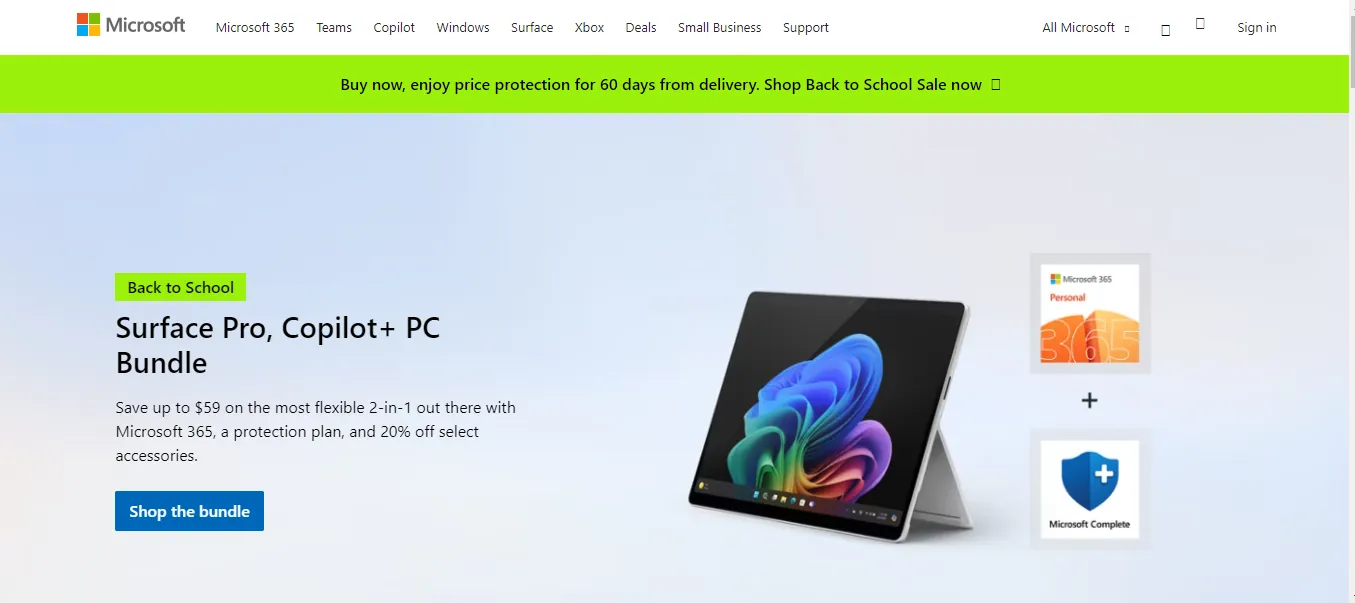
The platform is particularly well-suited for businesses that are already embedded in the Microsoft ecosystem, as it integrates seamlessly with other Microsoft tools like Power BI, Azure, and Office 365, allowing for a highly cohesive and efficient operational environment.
Key Features and Solutions
As a leading omnichannel solution provider, Microsoft Dynamics 365 Commerce offers a wide range of features and solutions designed to empower businesses to manage their entire commerce operations efficiently. These features cater to the needs of businesses looking to deliver consistent, personalized customer experiences across both online and offline channels.
- Unified Commerce Platform: Microsoft Dynamics 365 Commerce provides a unified platform that integrates online and offline sales channels, allowing businesses to manage eCommerce websites, physical retail stores, and mobile apps from a single interface. This integration ensures that product information, pricing, promotions, and inventory levels are consistent across all channels, offering customers a seamless shopping experience.
- Personalized Customer Experiences: Personalization is a key strength of Microsoft Dynamics 365 Commerce. The platform uses AI-driven insights to deliver personalized product recommendations, targeted promotions, and tailored content to customers based on their behavior, preferences, and purchase history. This level of personalization helps businesses increase customer engagement, improve conversion rates, and foster customer loyalty.
- Comprehensive Inventory and Order Management: The platform includes robust inventory and order management capabilities, enabling businesses to manage their inventory across multiple locations and channels. Microsoft Dynamics 365 Commerce supports real-time inventory tracking, order fulfillment, and returns management, ensuring that customers receive accurate information and timely deliveries, regardless of the channel they use.
- Omnichannel Marketing and Customer Engagement: Microsoft Dynamics 365 Commerce offers a suite of tools for omnichannel marketing and customer engagement. Businesses can create and manage marketing campaigns across multiple channels, including email, social media, and in-store promotions. The platform’s integration with Microsoft Dynamics 365 Marketing allows for seamless coordination of marketing efforts, ensuring consistent messaging and customer interactions across all touchpoints.
- Advanced Analytics and Reporting: Microsoft Dynamics 365 Commerce provides advanced analytics and reporting capabilities, powered by Microsoft Power BI. Businesses can gain deep insights into their sales performance, customer behavior, and operational efficiency. These insights enable data-driven decision-making, helping businesses optimize their operations and improve the customer experience.
- Seamless Integration with Microsoft Ecosystem: One of the most significant advantages of Microsoft Dynamics 365 Commerce is its seamless integration with the broader Microsoft ecosystem. The platform integrates with Microsoft Azure for cloud computing, Microsoft Power BI for analytics, and Microsoft Teams for collaboration. This integration allows businesses to leverage the full power of Microsoft’s tools to create a cohesive, efficient, and scalable commerce environment.
- Global Scalability and Flexibility: Microsoft Dynamics 365 Commerce is designed to support global operations, with features like multi-currency, multi-language, and regional tax management. The platform’s cloud-based architecture ensures that it can scale to meet the needs of businesses of all sizes, from small retailers to large enterprises with a global presence.
Pros and Cons
Pros
- Comprehensive Integration with Microsoft Products: One of the key advantages of Microsoft Dynamics 365 Commerce is its deep integration with other Microsoft products, such as Azure, Power BI, and Office 365. This integration provides businesses with a unified platform that enhances collaboration, data sharing, and operational efficiency.
- Robust Omnichannel Capabilities: The platform’s ability to unify online and offline sales channels ensures a seamless customer experience. Businesses can manage all their sales channels from a single platform, ensuring consistency in product information, pricing, and promotions.
- Personalization and AI-Driven Insights: Microsoft Dynamics 365 Commerce’s AI-driven personalization features allow businesses to deliver tailored experiences to customers, increasing engagement and driving sales. The platform’s use of AI also enhances decision-making, providing businesses with actionable insights.
- Scalability and Global Support: The platform’s cloud-based architecture and support for multi-currency, multi-language, and regional tax management make it an ideal choice for businesses with global operations or those planning to expand internationally.
- Strong Security and Compliance: As part of the Microsoft ecosystem, Dynamics 365 Commerce benefits from Microsoft’s robust security framework. The platform is designed to meet stringent security and compliance standards, ensuring that businesses can protect their data and maintain compliance with global regulations.
Cons
- Higher Upfront Costs: The subscription fees for Microsoft Dynamics 365 Commerce, coupled with potential implementation costs, can be significant, especially for larger businesses or those requiring extensive customization. The initial investment may be prohibitive for smaller businesses or those with limited budgets.
- Steeper Learning Curve: Due to the comprehensive nature of Microsoft Dynamics 365 Commerce’s features, users may face a steeper learning curve. The platform’s advanced capabilities often require dedicated training and ongoing support to ensure optimal utilization, which can add to the overall cost and time investment.
- Potential Customization Needs: Adapting Microsoft Dynamics 365 Commerce to meet specific industry requirements or unique business workflows may involve additional development. Customization needs can lead to increased costs and longer implementation times, particularly for businesses with complex requirements.
- Dependency on Microsoft Ecosystem: While integration with other Microsoft products is seamless, businesses that rely heavily on the Microsoft ecosystem may find it challenging to switch to non-Microsoft solutions. This dependency could limit flexibility and potentially increase long-term costs if the business’s needs evolve in ways that require integration with non-Microsoft systems.
- Complex Setup and Configuration: The initial setup and configuration of Microsoft Dynamics 365 Commerce can be intricate, often requiring IT expertise or consultant assistance. Businesses without in-house IT teams may need to engage external consultants, adding to the complexity and cost of the implementation process.
Pricing
Microsoft Dynamics 365 Commerce operates on a custom pricing model, designed to accommodate the unique needs of each business. The pricing structure is based on several factors, including the size of the business, the complexity of the implementation, the specific features required, and the level of support needed. Here are some key aspects of Microsoft Dynamics 365 Commerce’s pricing:
- Free Trial: This option provides access to a free trial of Microsoft Dynamics 365 Commerce, allowing businesses to experience the platform’s features before committing to a subscription. The trial includes capabilities for delivering a unified and seamless buying experience, enhancing customer engagement, increasing employee productivity, and optimizing store operations.
- Dynamics 365 Commerce Core Subscription – $180.00/user/month: This subscription includes the core capabilities needed to manage omnichannel retail operations. It covers essential features for businesses looking to unify their online and offline sales channels, manage inventory, and engage with customers across multiple touchpoints.
- eCommerce Add-On – $4,000.00/user/month: This add-on enhances the core Dynamics 365 Commerce capabilities by including eCommerce management features. It is designed for businesses that require advanced tools for managing their online stores alongside their physical retail operations.
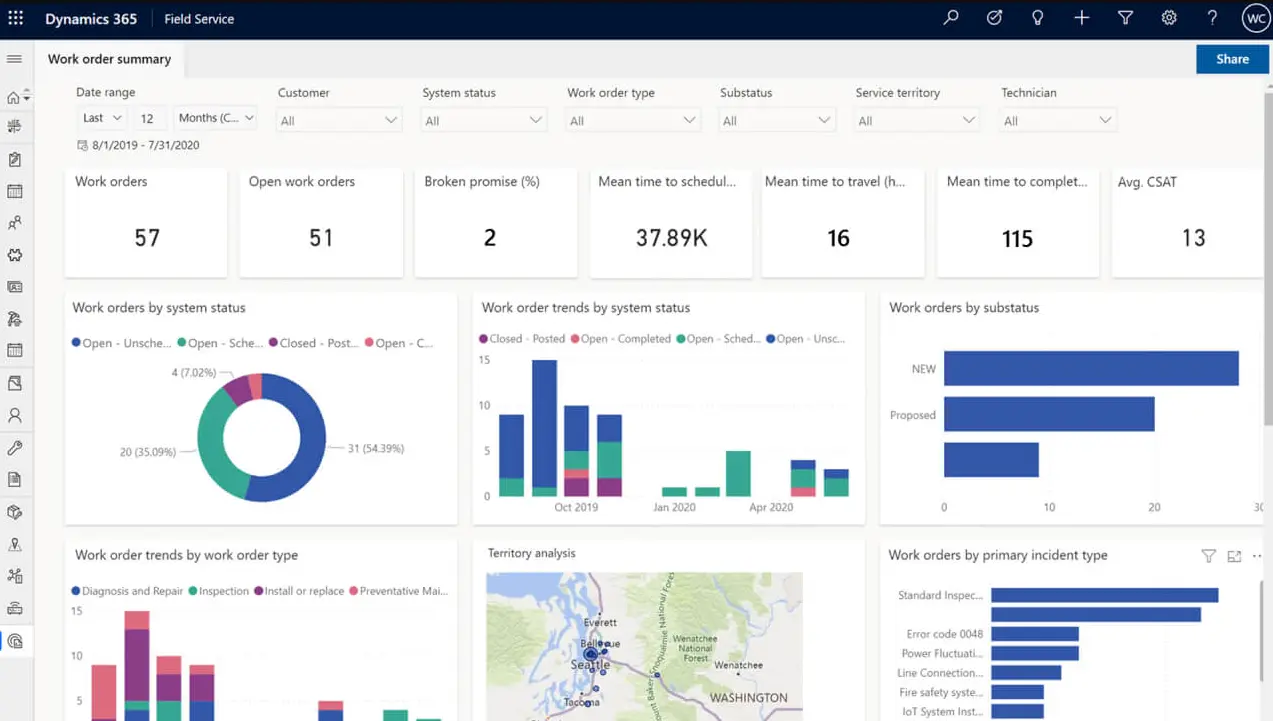
Microsoft Dynamics 365 Commerce is a leading omnichannel solution provider that offers a powerful and flexible platform designed to meet the needs of modern businesses operating across multiple channels. With its deep integration with the Microsoft ecosystem, robust omnichannel capabilities, and advanced personalization features, Microsoft Dynamics 365 Commerce provides businesses with the tools they need to deliver seamless and personalized customer experiences. For enterprises seeking a scalable, secure, and integrated solution that can handle the demands of modern commerce operations, Microsoft Dynamics 365 Commerce is always a top option.
BigCommerce
BigCommerce is a versatile eCommerce platform designed to help businesses of all sizes establish, manage, and scale their online stores. Known for its user-friendly interface and robust feature set, BigCommerce stands out among omnichannel solution providers for its ability to support a wide range of industries and business models. It offers extensive customization options, multi-channel selling capabilities, and powerful SEO tools, making it a competitive choice for businesses looking to thrive in the eCommerce space.
Background and Company Overview
Founded in 2009 in Austin, Texas, BigCommerce has quickly grown into one of the most popular eCommerce platforms worldwide. The platform is particularly well-suited for businesses looking to scale, offering a range of customizable templates, integrated payment solutions, and SEO tools.
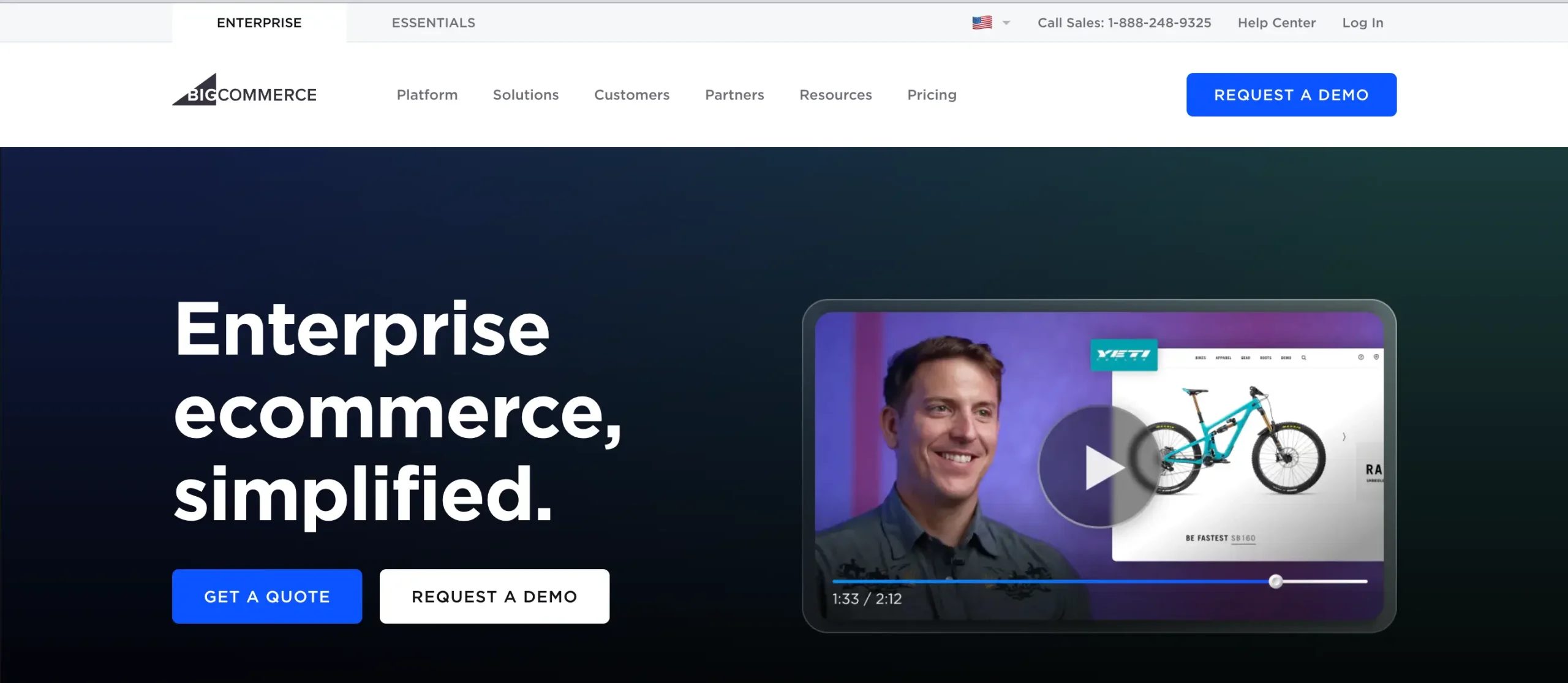
BigCommerce serves a diverse range of industries, including retail, B2B, fashion, and manufacturing, providing solutions that cater to both small businesses and large enterprises. With a focus on flexibility and scalability, BigCommerce allows businesses to manage their operations efficiently while offering customers a seamless shopping experience across multiple channels.
Key Features and Solutions
BigCommerce offers a comprehensive suite of features and solutions designed to help businesses manage their entire eCommerce ecosystem effectively. These features are aimed at enhancing customer experiences, improving operational efficiency, and supporting business growth.
- Multi-Channel Selling: BigCommerce allows businesses to sell across multiple channels, including online stores, marketplaces like Amazon and eBay, and social media platforms like Facebook, Instagram, and Pinterest. The platform’s centralized management system ensures that product information, inventory, and orders are synchronized across all channels, providing a consistent shopping experience for customers.
- Customizable Storefronts: BigCommerce provides a range of customizable templates and a drag-and-drop page builder, enabling businesses to create professional-looking storefronts without the need for coding. The platform also supports advanced customization through HTML, CSS, and JavaScript, allowing businesses to tailor their websites to their specific needs.
- Advanced SEO Tools: BigCommerce offers powerful SEO tools designed to help businesses improve their search engine rankings and drive organic traffic to their websites. Features include customizable URLs, metadata, and robots.txt editing, as well as built-in integration with Google AMP and Akamai Image Manager for faster page load times.
- Secure and Scalable Infrastructure: The platform provides a secure environment for online transactions, with features such as PCI DSS 3.2 compliance, multiple layers of firewalls, and intrusion detection systems. BigCommerce is also built on a scalable infrastructure, capable of handling high traffic volumes and large product catalogs, making it suitable for businesses looking to grow.
- B2B and B2C Commerce: BigCommerce caters to both B2B and B2C businesses, offering specialized features such as customer group pricing, bulk pricing, and purchase order management. The platform’s flexibility allows businesses to serve both individual consumers and business clients effectively.
- Comprehensive Analytics and Reporting: BigCommerce provides detailed analytics and reporting tools, enabling businesses to track sales performance, customer behavior, and marketing effectiveness. These insights help businesses make data-driven decisions to optimize their operations and improve the customer experience.
- Integration Capabilities: BigCommerce integrates with a wide range of third-party applications, including CRM systems, marketing automation tools, and ERP solutions. This flexibility allows businesses to extend the functionality of their online stores and streamline their operations.
Pros and Cons
Pros
- User-Friendly Interface: BigCommerce is known for its intuitive and easy-to-use interface, making it accessible to users with varying levels of technical expertise. This user-friendliness helps businesses quickly set up and manage their online stores.
- Scalability: The platform’s robust infrastructure and flexible architecture make it highly scalable, supporting businesses as they grow and expand into new markets. BigCommerce is suitable for businesses of all sizes, from small startups to large enterprises.
- Extensive Customization Options: BigCommerce offers extensive customization options, allowing businesses to create unique and tailored shopping experiences. The platform supports both basic customization through its drag-and-drop editor and advanced customization through HTML, CSS, and JavaScript.
- Comprehensive Multi-Channel Selling: The platform’s multi-channel selling capabilities enable businesses to reach customers across various online and offline channels, providing a consistent and seamless shopping experience.
- Strong Security Features: BigCommerce provides a secure environment for online transactions, with multiple layers of security measures to protect customer data and ensure compliance with industry standards.
Cons
- Revenue-Based Pricing Model: BigCommerce’s pricing is based on the revenue earned by the business, which can lead to higher costs as the business scales. This pricing structure may be a consideration for businesses with high sales volumes.
- Limited Mobile App: One notable drawback is the lack of a mobile app for managing the platform, which can hinder remote management and limit flexibility for business owners on the go.
- Additional Costs for Third-Party Integrations: While BigCommerce offers extensive integration capabilities, many third-party integrations and extensions come with additional costs. Businesses may need to budget for these extras, particularly if they require specialized functionality.
- Limited Free Templates: The platform offers a limited selection of free templates, which may require businesses to invest in premium themes or custom design work to achieve the desired look and feel for their online store.
Pricing
BigCommerce offers a flexible pricing model with several plans to accommodate businesses at different stages of growth:
- Standard Plan: Starts at $29.95/month; this plan includes essential eCommerce features, such as unlimited products, file storage, bandwidth, and multi-channel selling capabilities. It is suitable for small businesses looking to establish their online presence.
- Plus Plan: Starts at $79.95/month, the Plus Plan includes advanced marketing tools, customer segmentation, and abandoned cart recovery features. It is designed for growing businesses that need more sophisticated tools to drive sales and customer engagement.
- Pro Plan: Starts at $299.95/month, The Pro Plan is geared towards high-volume businesses, offering features such as Google customer reviews, custom SSL, and advanced reporting tools. It also supports larger product catalogs and higher sales volumes.
- Enterprise Plan: The Enterprise Plan is tailored for large businesses and enterprises with complex requirements. It includes all the features of the Pro Plan, plus additional support, API access, and advanced customization options. Pricing is customized based on the specific needs of the business.
All in all, BigCommerce is a leading omnichannel solution provider that offers a powerful and flexible platform designed to meet the needs of businesses of all sizes. With its user-friendly interface, extensive customization options, and comprehensive multi-channel selling capabilities, BigCommerce provides businesses with the tools they need to succeed in the competitive eCommerce landscape. However, businesses should consider the platform’s revenue-based pricing model, potential additional costs for third-party integrations, and limited mobile management options when evaluating whether BigCommerce is the right fit for their needs.
VTEX
VTEX is a leading global enterprise digital commerce platform that provides businesses with the tools they need to manage their online and offline sales channels in a unified manner. As one of the prominent omnichannel solution providers, VTEX is designed to cater to businesses of all sizes, with a particular focus on supporting enterprise-level operations. The platform is known for its robust features, scalability, and ability to enable businesses to create seamless, integrated customer experiences across multiple touchpoints.
Background and Company Overview
Founded in 1999 in Brazil, VTEX has grown to become a global player in the digital commerce space, serving thousands of clients in over 40 countries. VTEX initially started as an eCommerce platform but has since evolved into a comprehensive digital commerce platform that supports a wide range of business models, including B2B, B2C, and marketplace operations. The company’s mission is to help businesses accelerate their digital transformation by providing them with an integrated, cloud-based platform that combines eCommerce, order management, and marketplace capabilities.
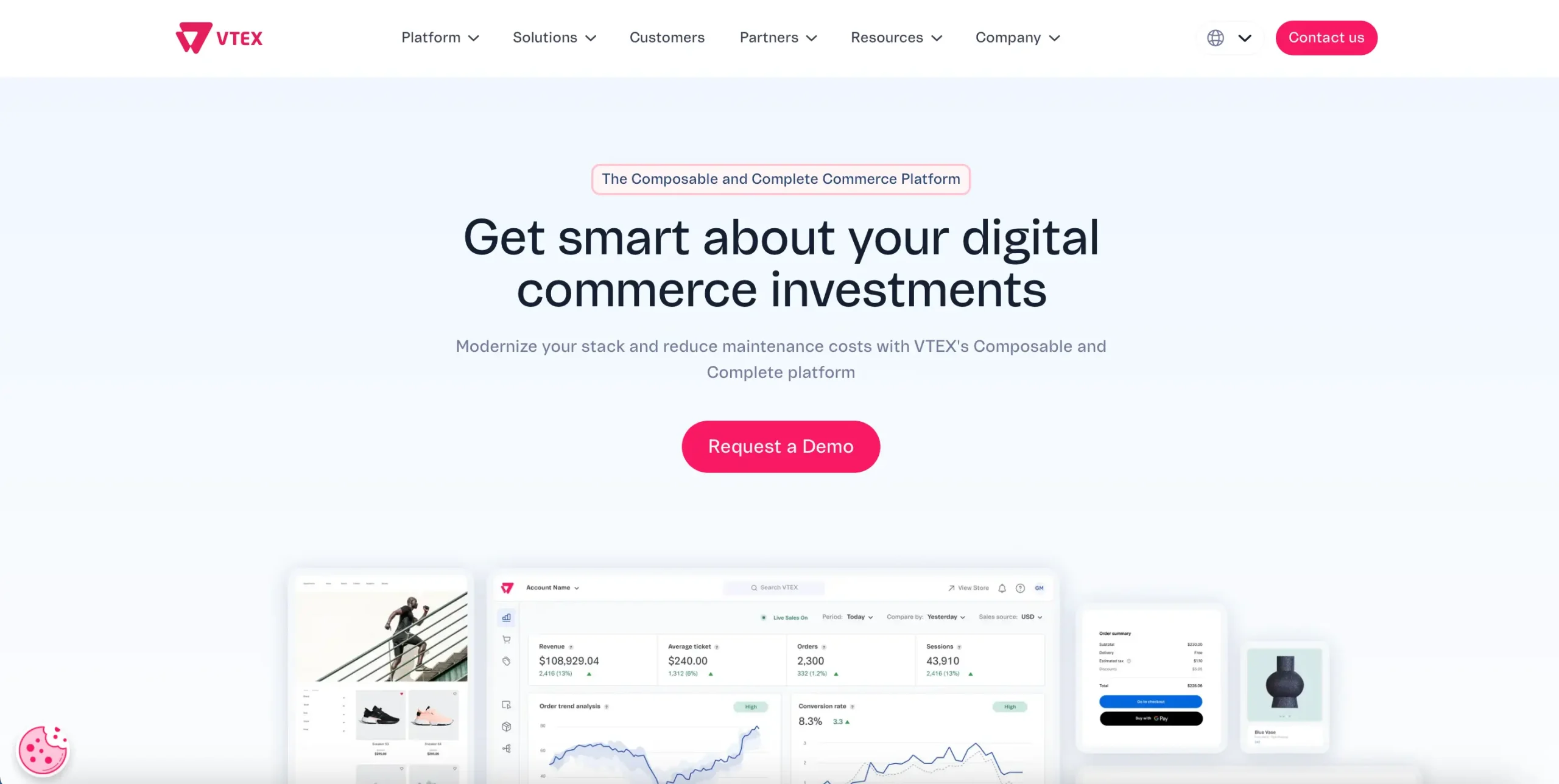
VTEX has been recognized for its innovative approach to commerce, particularly its use of a microservices-based architecture, which allows for greater flexibility, scalability, and rapid deployment. The platform’s ability to support complex commerce operations makes it a preferred choice for large enterprises and global brands looking to enhance their omnichannel strategies.
Key Features and Solutions
VTEX offers a wide range of features and solutions that empower businesses to manage their entire commerce ecosystem effectively. These features are designed to support businesses in delivering consistent, personalized customer experiences across all channels.
- Unified Commerce Platform: VTEX provides a unified commerce platform that integrates online and offline sales channels, enabling businesses to manage all aspects of their operations from a single interface. This includes managing product catalogs, pricing, promotions, and inventory across multiple channels, ensuring a consistent experience for customers.
- Marketplace and Multi-Tenant Capabilities: One of VTEX’s standout features is its built-in marketplace capabilities. The platform allows businesses to operate their own marketplace, where they can onboard third-party sellers and manage multiple storefronts from a single platform. This feature is particularly valuable for businesses looking to expand their product offerings and increase their revenue streams.
- Order Management System (OMS): VTEX includes a comprehensive order management system that supports complex order processing workflows, including order routing, inventory visibility, and returns management. The OMS ensures that businesses can fulfill orders efficiently and accurately, regardless of the sales channel.
- Omnichannel Retail and B2B Commerce: VTEX is designed to support both B2C and B2B commerce, offering specialized features for each market. For B2C, the platform provides tools for personalized marketing, customer segmentation, and loyalty programs. For B2B, VTEX offers features such as custom pricing, account management, and bulk ordering capabilities.
- Headless Commerce Architecture: VTEX employs a headless commerce architecture, which separates the front-end and back-end of the platform. This architecture allows businesses to create highly customized and flexible front-end experiences while leveraging the powerful back-end capabilities of VTEX. It also enables faster implementation and easier integration with other systems.
- Scalability and Cloud-Based Infrastructure: The platform is built on a scalable, cloud-based infrastructure that supports businesses as they grow. VTEX’s infrastructure is designed to handle high-traffic volumes and large product catalogs, making it suitable for enterprises with complex commerce needs.
- AI and Machine Learning Capabilities: VTEX incorporates AI and machine learning to enhance various aspects of the commerce experience, such as personalized product recommendations, predictive analytics, and automated marketing campaigns. These capabilities help businesses deliver more relevant and timely experiences to their customers.
Pros and Cons
Pros
- Multi-channel sales: Vtex allows you to sell your products and services across multiple channels, which can help you reach a wider audience and increase your sales.
- Real-time inventory management: Vtex provides real-time inventory management, which can help you avoid stockouts and improve your customer satisfaction.
- Customization: Vtex allows you to customize your online store to match your brand and provide a unique shopping experience for your customers
- Scalability and Flexibility: VTEX’s cloud-based infrastructure and microservices architecture make it highly scalable and flexible, allowing businesses to grow and adapt their operations as needed.
- Global Reach and Support: VTEX’s global presence and support for multiple languages, currencies, and tax regulations make it an excellent choice for businesses operating in or expanding into international markets.
Cons
- Higher Costs: The platform’s comprehensive features and enterprise-level capabilities come with sales-based pricing, which gets more and more expensive the more your business scale
- Complex Implementation: VTEX’s extensive customization options and features can make the platform complex to implement, requiring a significant investment of time and resources. Businesses may need to engage external consultants or have a dedicated IT team to manage the implementation process.
- Learning Curve: The platform’s advanced features and flexibility present a learning curve for users, particularly those who are not familiar with headless commerce or microservices-based architectures.
- Limited integrations: Vtex has limited integrations with third-party apps and services, which can limit your ability to customize your online store.
Pricing
VTEX offers a flexible pricing model that is primarily based on the Growth Merchandise Value (GMV) of the business. The pricing structure is designed to align with the success and scale of the business, making it accessible for companies of various sizes.
- B2B Commerce Pricing:
- Annual License Fee: Starting at 1% of GMV.
- Revenue Share: Rebate starting at 1% of GMV plus $1,000/month.
- B2C Commerce Pricing:
- Revenue Share (On Demand Plan): Rebate starting at 2.5% of GMV plus a $500/month.
VTEX is a leading omnichannel solution provider that offers a powerful and flexible platform designed to meet the needs of enterprise-level businesses. With its comprehensive features, built-in marketplace capabilities, and headless commerce architecture, VTEX provides businesses with the tools they need to deliver seamless and personalized customer experiences across all channels.
Commercetools
Commercetools is a pioneering cloud-based platform that offers a highly flexible and scalable approach to digital commerce. As one of the most innovative omnichannel solution providers, Commercetools is known for its headless commerce architecture, which allows businesses to deliver seamless, customized shopping experiences across all channels. The platform is designed to support enterprises with complex and diverse requirements, offering a wide range of features that empower businesses to build and scale their digital commerce operations efficiently.
Background and Company Overview
Founded in 2006, Commercetools has rapidly become a leader in the eCommerce industry, particularly in the realm of headless commerce. The company was among the first to embrace microservices and API-first approaches, making it a popular choice for businesses seeking flexibility and innovation in their commerce platforms. With headquarters in Germany and offices across the globe, Commercetools serves a wide range of industries, including retail, manufacturing, and telecommunications. The platform is designed to meet the demands of modern commerce, offering businesses the tools they need to create highly customizable and future-proof solutions.
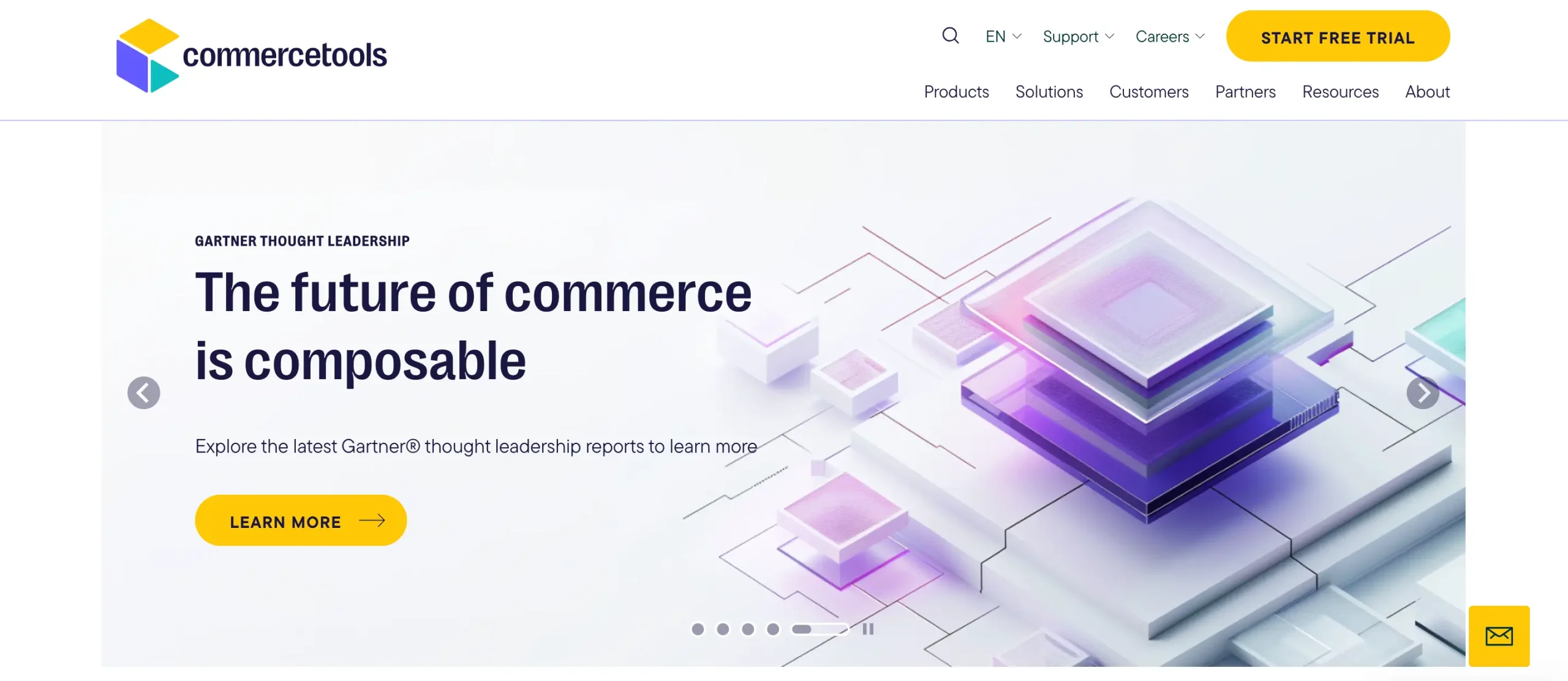
Commercetools is built on a modern, cloud-native architecture that supports continuous innovation and scalability. This makes it particularly well-suited for large enterprises and organizations with complex digital commerce needs. The platform’s API-first approach allows businesses to integrate with existing systems and extend their capabilities, providing a truly omnichannel solution that can adapt to changing market demands.
Key Features and Solutions
Commercetools offers a comprehensive suite of features and solutions that empower businesses to manage their digital commerce operations with maximum flexibility and efficiency. These features are designed to help businesses deliver consistent and personalized experiences across all customer touchpoints.
- Headless Commerce Architecture: Commercetools is renowned for its headless commerce architecture, which decouples the front-end user experience from the back-end commerce operations. This architecture allows businesses to create highly customized and flexible front-end experiences while maintaining robust back-end capabilities. The headless approach also enables faster development cycles and easier integration with other systems.
- API-First Platform: The API-first design of Commercetools allows businesses to seamlessly integrate with third-party services and extend their digital commerce capabilities. This approach provides businesses with the flexibility to choose the best tools for their specific needs and to innovate quickly by leveraging a wide range of microservices.
- Modular Microservices: Commercetools is built on a microservices architecture, which allows businesses to deploy and scale individual components independently. This modularity enables businesses to tailor their commerce operations to their unique requirements, whether it’s for product information management (PIM), order management, or inventory control.
- Omnichannel Commerce Support: Commercetools supports a true omnichannel commerce experience, enabling businesses to manage their online stores, mobile apps, in-store kiosks, and other sales channels from a single platform. This integration ensures that product information, inventory levels, and customer data are consistent across all touchpoints, providing a seamless shopping experience for customers.
- Scalability and Cloud-Native Infrastructure: The platform’s cloud-native infrastructure ensures that it can scale to meet the demands of large enterprises and high-traffic environments. Commercetools is designed to handle complex and large-scale operations, making it a preferred choice for businesses that require a reliable and scalable commerce solution.
- Globalization and Localization: Commercetools offers robust support for global operations, including multi-language, multi-currency, and regional tax management capabilities. This makes it easier for businesses to expand into new markets and provide a consistent brand experience across different regions.
- Advanced Personalization and Customer Experience Management: The platform provides tools for delivering personalized customer experiences based on real-time data and customer behavior. Businesses can create targeted marketing campaigns, personalized product recommendations, and customized content to engage customers more effectively.
Pros and Cons
Pros
- Highly Flexible and Scalable: Commercetools’ headless architecture and microservices-based platform provide unparalleled flexibility and scalability. This makes it an ideal solution for businesses with complex and evolving digital commerce needs.
- API-First Approach: The API-first design allows for seamless integration with third-party services and existing systems, providing businesses with the ability to create a customized and future-proof commerce environment.
- Modular Microservices: The modular architecture of Commercetools enables businesses to deploy and scale individual components independently, offering greater control over their commerce operations.
- Comprehensive Omnichannel Support: Commercetools supports true omnichannel commerce, allowing businesses to manage all customer touchpoints from a single platform. This integration ensures a consistent and seamless shopping experience across all channels.
- Globalization Capabilities: The platform’s robust support for multi-language, multi-currency, and regional tax management makes it a strong choice for businesses operating in multiple regions or planning to expand globally.
Cons
- Complex Setup: Some users find the initial setup of Commercetools daunting due to its extensive features and API-first approach. This complexity can result in a steeper learning curve, particularly for those new to headless commerce platforms.
- Technical Expertise Required: While highly customizable, Commercetools demands significant technical expertise to implement and manage. Businesses without in-house development resources may struggle to fully leverage the platform’s capabilities.
- Limited Out-of-the-Box Functionality: As a headless solution, Commercetools primarily focuses on backend infrastructure, requiring users to develop the frontend and integrate additional components. This contrasts with traditional platforms that offer pre-built storefronts and features, necessitating more effort to create a complete eCommerce experience.
Pricing
Commercetools operates on a custom pricing model, which is tailored to the specific needs of each business. Commercetools creates customized pricing tiers based on several factors, including the number of sales channels, the geographic regions or countries served, and the currencies supported. This tiered pricing structure allows businesses to select the level of service that best fits their specific needs and scale as they grow. Each tier is designed to accommodate different levels of complexity in a business’s operations, ensuring that businesses only pay for the features and services they actually use Here are some key aspects of Commercetools’ pricing:
- Base Licensing Fees: Commercetools charges a base licensing fee that provides access to the platform’s core features. The cost varies depending on the scale of the business and the specific modules or services selected.
- Transaction-Based Fees: Pricing also includes transaction-based fees, which are tied to the volume of transactions processed through the platform. This model ensures that the cost of using Commercetools scales with the growth of the business.
Overall, Commercetools is a leading omnichannel solution provider that offers a powerful and flexible platform designed to meet the needs of modern enterprises. With its headless architecture, API-first approach, and microservices-based infrastructure, Commercetools provides businesses with the tools they need to create highly customized, scalable, and future-proof digital commerce solutions. However, businesses should consider the platform’s higher upfront costs, potential customization needs, and complex setup processes when evaluating whether Commercetools is the right fit for their omnichannel strategy.
Optimizely (Episerver)
Optimizely, formerly Epiverse, is a leading digital experience platform (DXP) that combines content management, digital marketing, and eCommerce into a unified solution. As a prominent omnichannel solution provider, Optimizely helps businesses deliver personalized customer experiences across multiple channels. The platform is designed to cater to businesses of all sizes, offering robust tools for managing content, commerce, and customer data to drive engagement and conversions.
Background and Company Overview
Optimizely, originally known as Episerver, was founded in 1994 in Sweden. Over the years, the company evolved into a global leader in digital experience management, offering a platform that integrates content management, digital commerce, and personalization. In 2020, Episerver acquired Optimizely, a leading experimentation platform, and rebranded itself under the Optimizely name. This acquisition expanded the company’s capabilities, particularly in the areas of A/B testing, personalization, and experimentation, allowing businesses to optimize every customer interaction across channels.
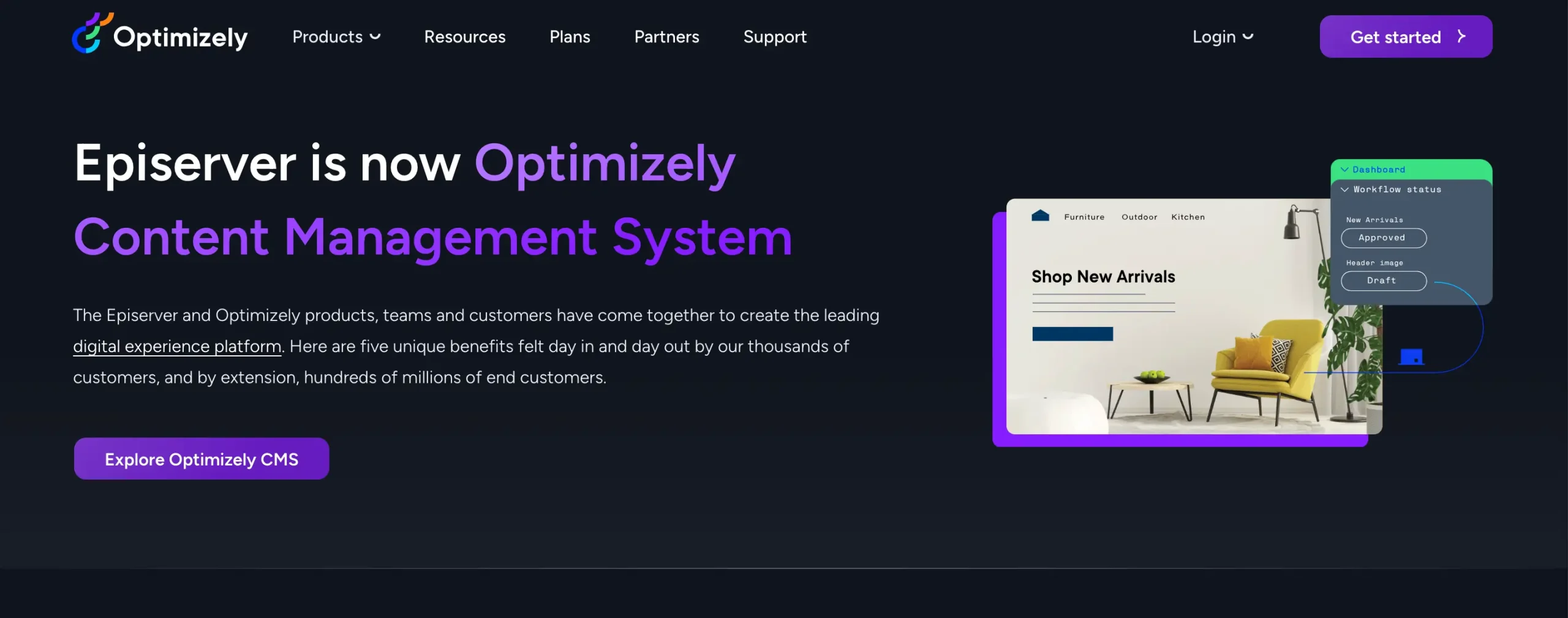
Optimizely is used by thousands of businesses worldwide, ranging from mid-sized companies to large enterprises. The platform’s strength lies in its ability to unify content, commerce, and data into a seamless experience, enabling businesses to deliver highly personalized and engaging customer journeys. With a focus on innovation and customer success, Optimizely continues to be a top choice for businesses looking to enhance their omnichannel strategies.
Key Features and Solutions
Optimizely offers a comprehensive suite of features designed to help businesses manage their digital experiences and eCommerce operations effectively. These features support the creation of personalized, consistent, and engaging customer experiences across all channels.
- Content Management System (CMS): Optimizely’s CMS is a powerful tool that allows businesses to create, manage, and deliver content across multiple channels. The platform’s intuitive interface and drag-and-drop functionality make it easy for marketers and content creators to manage digital content without relying on IT support. The CMS also supports multi-language and multi-site management, making it ideal for global businesses.
- Digital Commerce: Optimizely’s digital commerce capabilities enable businesses to manage their online stores and deliver personalized shopping experiences. The platform supports complex product catalogs, multi-channel commerce, and advanced pricing models. With its integration of content and commerce, Optimizely allows businesses to create seamless shopping experiences that drive engagement and conversions.
- Personalization and Experimentation: One of Optimizely’s standout features is its powerful personalization and experimentation tools. The platform uses AI-driven insights to deliver personalized content and product recommendations based on customer behavior. Additionally, businesses can run A/B tests and multivariate experiments to optimize their digital experiences and improve conversion rates.
- Customer Data Platform (CDP): Optimizely’s CDP allows businesses to unify customer data from various sources into a single, comprehensive profile. This data can be used to create personalized marketing campaigns, tailor content, and improve customer service. The CDP also integrates with other tools in the Optimizely ecosystem, enabling businesses to leverage customer insights across their entire digital experience.
- Marketing Automation: The platform includes robust marketing automation tools that help businesses streamline their marketing efforts. Optimizely supports email marketing, lead nurturing, and customer segmentation, allowing businesses to deliver targeted campaigns that resonate with their audience. The automation tools are deeply integrated with the CMS and commerce features, enabling a cohesive marketing strategy.
- Scalability and Flexibility: Optimizely is built on a scalable architecture that can accommodate businesses of all sizes. The platform’s modular design allows businesses to add or remove features as needed, ensuring that they only pay for what they use. This flexibility makes Optimizely a suitable choice for both growing businesses and established enterprises.
Pros and Cons
Not unlike any other omnichannel solution provider, Optimizely presents a mix of strengths and weaknesses. Understanding these pros and cons is crucial for businesses to determine if Optimizely aligns with their specific needs and objectives, especially when considering factors like scalability, advanced personalization, and the potential costs and complexities involved in implementation.
Pros
- Unified Digital Experience Platform: Optimizely’s ability to integrate content management, digital commerce, and personalization into a single platform is a significant advantage. This unification allows businesses to manage all aspects of their digital experience from one place, ensuring consistency and efficiency.
- Advanced Personalization and Experimentation: The platform’s AI-driven personalization and experimentation tools enable businesses to deliver highly tailored customer experiences and continuously optimize their digital presence. These capabilities are particularly valuable for businesses looking to increase engagemxent and conversion rates.
- Scalability and Flexibility: Optimizely’s scalable architecture and modular design make it suitable for businesses of all sizes. The platform can grow with the business, accommodating increasing traffic, products, and customer data.
- Global Reach: With support for multi-language and multi-site management, Optimizely is well-suited for businesses operating in multiple regions. The platform’s global capabilities help businesses deliver consistent experiences across different markets.
Cons
- Steep Learning Curve: Optimizely’s interface can be overwhelming for new users due to its extensive features and functionalities. The platform’s complexity may require a significant time investment to learn and navigate effectively, especially for those without prior experience with A/B testing or experimentation tools.
- Pricing Structure: Optimizely’s pricing model can be prohibitive, particularly for small and medium-sized businesses. The costs associated with training, implementation, and ongoing support add to the overall expense, making it a less accessible option for smaller enterprises.
- Limited Customer Support: Some users have expressed dissatisfaction with Optimizely’s customer support, citing slow response times and a lack of personalized assistance. This can be particularly challenging for businesses that need timely support to resolve technical issues or optimize their experimentation strategies.
Pricing
Optimizely operates on a custom pricing model, designed to accommodate the unique needs of each business. The pricing structure is typically based on factors such as the size of the business, the level of customization required, the number of users, and the expected transaction volumes. Optimizely’s pricing is highly customizable, depending on a company’s specific needs. The platform offers two main product levels: Optimizely Web and Optimizely Full Stack.
- Optimizely Web: Focuses on experimentation and personalization for websites, tailored primarily for marketing teams. It’s ideal for testing page layouts, checkout flows, content, and images.
- Optimizely Full Stack: Designed for product developers to experiment with new product features. Although it overlaps with Optimizely Web in some areas, it serves a different purpose within experimentation.
- Starting Cost: Optimizely plans start at approximately $36,000/year. However, actual pricing varies based on the specific requirements and the level of service needed, making it crucial to consult with Optimizely’s sales team for an accurate quote.
Optimizely is a leading omnichannel solution provider that offers a powerful and flexible platform designed to meet the needs of modern businesses. With its unified approach to content management, digital commerce, and personalization, Optimizely provides businesses with the tools they need to deliver seamless and engaging customer experiences across all channels. Businesses should consider the platform’s higher upfront costs, complex implementation process, and potential learning curve when evaluating whether Optimizely is the right fit for their omnichannel strategy.
Criteria for Selecting an Omnichannel Solution Provider
When selecting an omnichannel solution provider, it’s essential to evaluate the specific needs and goals of your business. By carefully assessing these criteria, you can ensure that the chosen provider aligns with your operational requirements, customer experience expectations, and long-term growth strategies, setting the foundation for successful omnichannel integration.
Business Needs Assessment
Choosing the right omnichannel solution provider is critical for ensuring that your business can effectively manage its customer interactions across multiple channels. A thorough business needs assessment is the first step in this process, allowing you to identify and prioritize the specific requirements that your business has. By clearly understanding your goals, you can align these needs with the capabilities of potential providers to find the best fit.
Identifying and Prioritizing Business Needs
The foundation of selecting the right omnichannel solution provider begins with a detailed assessment of your business needs. This involves a comprehensive evaluation of your current operations, customer interaction points, and future growth plans. Here are some key aspects to consider:
- Operational Complexity: Assess the complexity of your business operations, including the number of sales channels you operate, the diversity of your product offerings, and the geographic regions you serve. If your business operates across multiple channels (e.g., online stores, physical locations, social media, and marketplaces), it’s crucial to prioritize a solution that can integrate all these channels seamlessly.
- Customer Experience: Understanding your customers’ expectations is vital. Identify the types of experiences your customers expect across different channels—whether it’s personalized recommendations, seamless transitions between online and offline interactions, or fast and efficient service. Prioritize solutions that enable you to deliver a consistent and personalized customer experience across all touchpoints.
- Scalability and Growth Potential: Consider your business’s growth trajectory. If you plan to expand into new markets, add new sales channels, or significantly increase your customer base, it’s essential to choose a provider that offers scalable solutions. Scalability ensures that your omnichannel system can grow with your business, accommodating increased traffic, larger product catalogs, and more complex operations without compromising performance.
- Integration with Existing Systems: Evaluate your existing technology stack, including CRM systems, ERP systems, and any other key software your business relies on. Prioritize omnichannel solution providers that offer seamless integration with these systems to avoid disruptions and ensure smooth data flow across your entire operation.
- Budget Constraints: Determine your budget for implementing and maintaining an omnichannel solution. While it’s important to invest in a solution that meets your needs, it’s also crucial to ensure that the cost aligns with your financial capabilities. Be mindful of not only the upfront costs but also the ongoing costs associated with support, maintenance, and potential upgrades.
Matching Needs with Provider Capabilities
Once you have identified and prioritized your business needs, the next step is to match these needs with the capabilities of potential omnichannel solution providers. Here’s how to effectively align your requirements with what providers offer:
- Feature Alignment: Evaluate the features offered by each omnichannel solution provider and determine how well they align with your prioritized business needs. For example, if personalized customer experiences are a top priority, look for providers with advanced AI-driven personalization and customer segmentation tools.
- Customization and Flexibility: Consider how much customization the provider allows. Some businesses require highly customized solutions to meet unique industry-specific needs, while others may benefit from more out-of-the-box solutions. Assess the provider’s ability to offer flexible options that can be tailored to your specific operational requirements.
- Vendor Expertise and Support: The expertise of the vendor and the level of support they offer are critical factors in your decision. Look for providers with a strong track record of success in your industry and those that offer comprehensive support, including implementation assistance, training, and ongoing customer service.
- Technology and Innovation: Assess the provider’s commitment to innovation and technology. Providers that regularly update their platforms with the latest technological advancements (such as AI, machine learning, and automation) are more likely to help your business stay competitive in a rapidly evolving market.
- Cost-Benefit Analysis: Perform a cost-benefit analysis by comparing the potential ROI of each provider against the costs involved. This analysis should consider both the immediate and long-term benefits of the solution, including increased efficiency, improved customer satisfaction, and potential revenue growth.
Scalability and Flexibility
When evaluating omnichannel solution providers, scalability and flexibility are crucial factors that determine how well a solution can grow and adapt with your business. These aspects are vital for ensuring that the platform can handle increasing demands as your business expands, and can be tailored to meet unique operational needs.
Importance of Scalability in Omnichannel Solutions
Scalability is essential for businesses that anticipate growth, whether in terms of customer base, product offerings, or geographic reach. An omnichannel solution must be capable of supporting increased transaction volumes, additional sales channels, and more complex workflows without compromising performance. Scalability ensures that the platform can handle peak traffic periods, such as holiday seasons or major promotions, maintaining seamless operations across all channels.
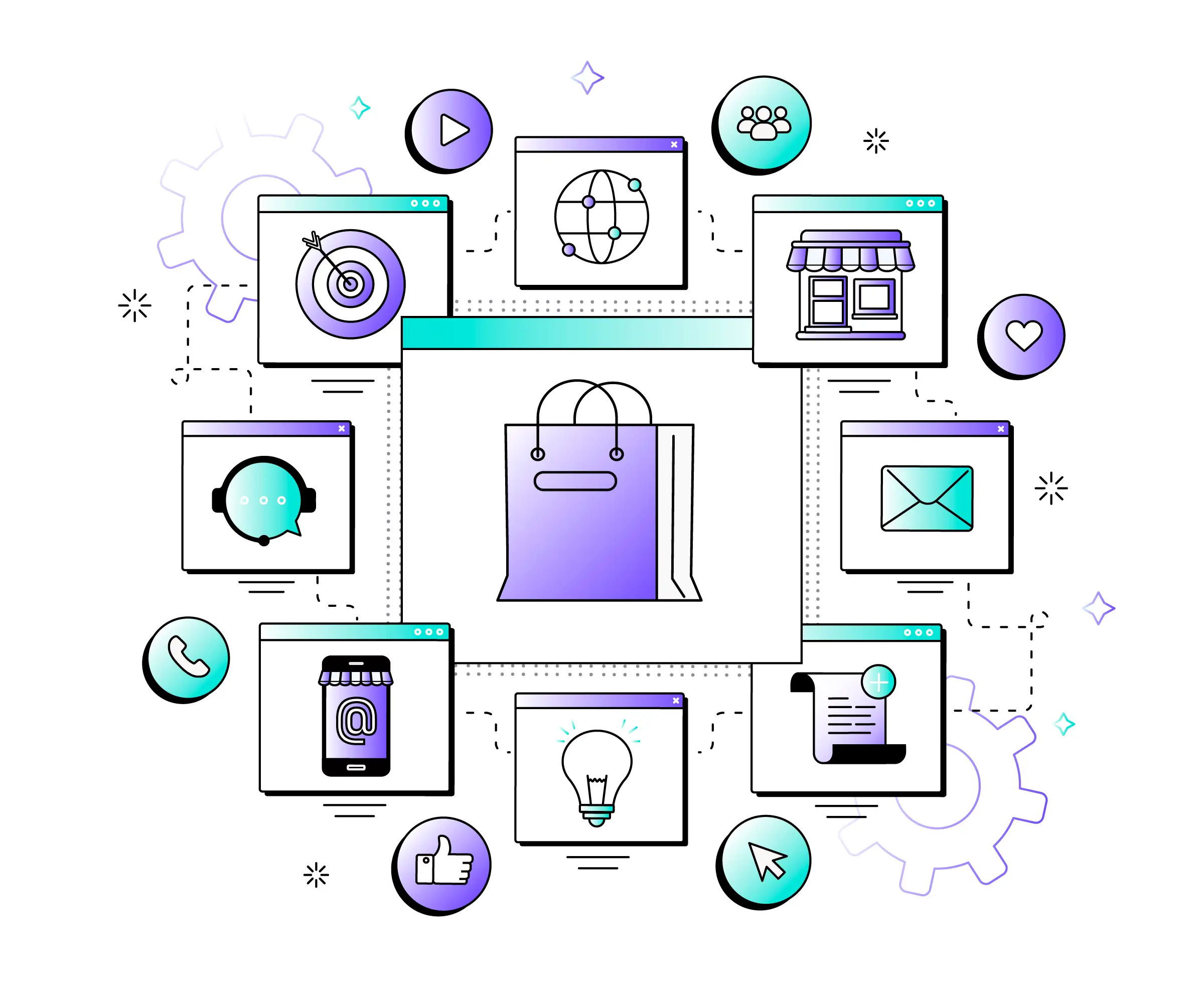
A scalable omnichannel solution also allows businesses to expand their reach into new markets or regions without needing to overhaul their entire system. This capability is particularly important for enterprises with global aspirations, as it enables them to manage multiple languages, currencies, and tax regulations from a unified platform. By choosing a scalable solution, businesses can avoid the costly and disruptive process of migrating to a new platform as they grow, ensuring that their operations remain consistent and efficient over time.
Evaluating Flexibility and Customization Options
Flexibility is another critical factor when selecting an omnichannel solution provider. The ability to customize the platform to meet specific business needs is vital for ensuring that the solution aligns with your operational processes and customer experience goals. A flexible platform allows businesses to tailor features, workflows, and integrations to suit their unique requirements, rather than forcing them to conform to a one-size-fits-all solution.
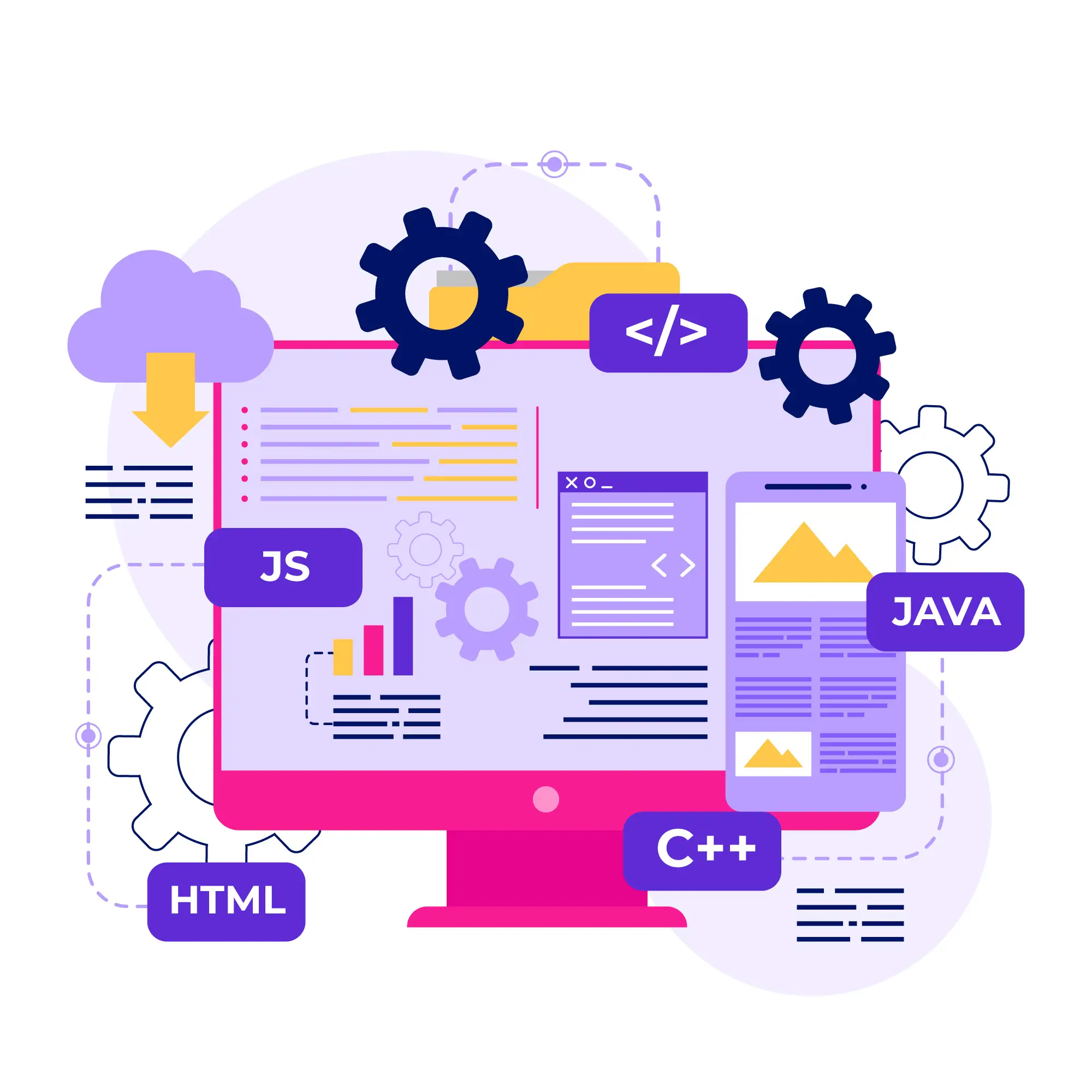
When evaluating flexibility, consider the platform’s ability to integrate with existing systems, such as CRM, ERP, and POS systems. Seamless integration is essential for maintaining a unified view of customer data and streamlining operations across all channels. Additionally, the platform should offer a wide range of APIs and support for third-party extensions, enabling businesses to enhance their capabilities with additional tools and services as needed.
Customization options are equally important. Businesses should assess the extent to which the platform allows them to modify user interfaces, design customer journeys, and configure back-end processes. The ability to create bespoke experiences that reflect your brand identity and meet customer expectations is a significant advantage in a competitive market.
Integration Capabilities
When selecting an omnichannel solution provider, one of the most critical factors to consider is the platform’s integration capabilities. Seamless integration with existing systems is essential for maintaining a unified and efficient operation, ensuring that all parts of your business work together harmoniously. The ability to integrate effectively can significantly impact the success of your omnichannel strategy, influencing everything from customer experience to operational efficiency.
Importance of Seamless Integration with Existing Systems
Seamless integration with existing systems is paramount for businesses looking to implement an omnichannel strategy. Many businesses already rely on a variety of software solutions, such as CRM systems, ERP systems, POS systems, and inventory management tools. The ability of an omnichannel solution to integrate with these systems determines how well it can support and enhance current operations without causing disruptions.
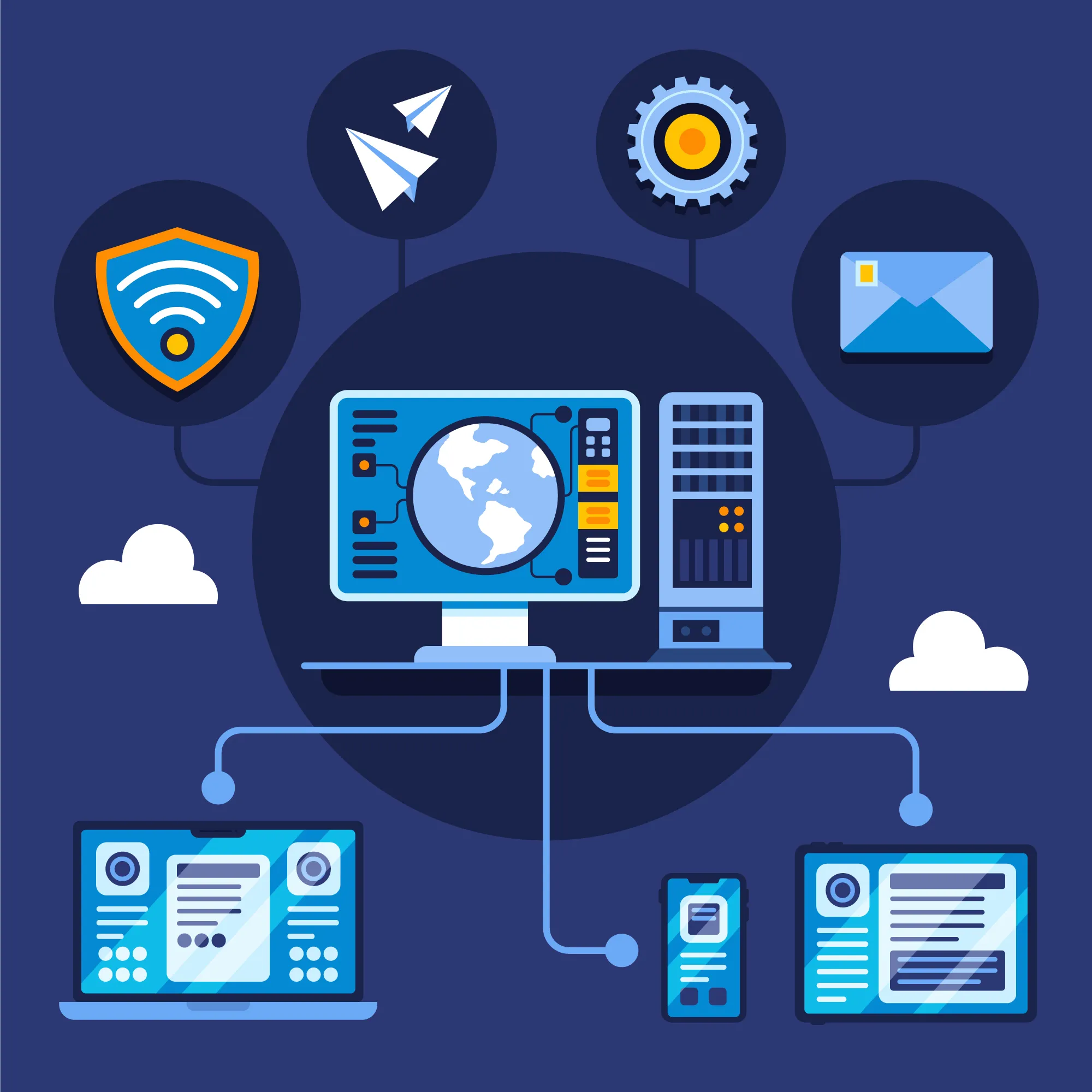
Effective integration allows data to flow seamlessly between different systems, providing a comprehensive and real-time view of the entire business. For instance, integrating your omnichannel platform with your CRM system ensures that customer data is consistent across all touchpoints, enabling personalized marketing, better customer service, and improved decision-making. Similarly, integrating with ERP and inventory management systems ensures that stock levels, order fulfillment, and supply chain processes are synchronized across all channels, reducing the risk of stockouts, overstocking, or delays.
Furthermore, seamless integration helps to minimize the need for manual data entry and reduces the likelihood of errors, which can lead to operational inefficiencies and poor customer experiences. By choosing an omnichannel solution provider that offers strong integration capabilities, businesses can ensure that their existing investments in technology are preserved and enhanced rather than rendered obsolete.
Assessing Integration Features of Different Providers
When evaluating the integration capabilities of different omnichannel solution providers, it is important to consider several key factors:
- API Availability and Flexibility: A robust API is crucial for enabling integration between the omnichannel platform and other systems. Assess whether the provider offers comprehensive and well-documented APIs that allow for easy integration with your existing software. Flexible APIs enable businesses to customize how data flows between systems, ensuring that the platform can be tailored to meet specific operational needs.
- Pre-Built Integrations: Many omnichannel solution providers offer pre-built integrations with popular third-party applications, such as CRM, ERP, marketing automation, and POS systems. These pre-built integrations can significantly reduce the time and effort required to connect the platform with existing systems. Evaluate the range and quality of these integrations to ensure they cover the systems you already use.
- Ease of Integration: Consider the ease with which the platform can be integrated into your existing infrastructure. Some providers may offer integration tools or services that simplify the process, while others may require extensive customization and development work. Assess whether the provider offers support during the integration process, including technical assistance and documentation.
- Data Synchronization and Real-Time Updates: One of the primary benefits of integration is the ability to synchronize data across systems in real-time. Ensure that the omnichannel solution provider supports real-time data updates, allowing your business to maintain accurate and up-to-date information across all channels. This capability is particularly important for managing inventory, order fulfillment, and customer interactions.
- Scalability of Integration: As your business grows, your integration needs may evolve. Evaluate whether the provider’s integration capabilities can scale with your business, allowing you to add new systems, channels, or functionalities without disrupting existing operations. Scalable integration ensures that your omnichannel platform can adapt to future changes and continue to support your business as it expands.
Customer Support and Service
When choosing an omnichannel solution provider, the quality of customer support and service is a critical consideration that can significantly impact your business’s success. Reliable and responsive customer support ensures that any technical issues, implementation challenges, or system updates are handled efficiently, minimizing disruptions to your operations. Additionally, ongoing training and support are essential for ensuring that your team can fully utilize the platform’s features and capabilities, maximizing the return on your investment.
Evaluating the Quality of Customer Support
The quality of customer support provided by an omnichannel solution provider is a key factor in determining how effectively the platform can be integrated into your business operations. Here are some important aspects to consider when evaluating customer support:
- Response Times: Quick response times are crucial, especially in scenarios where a technical issue could impact your sales or customer experience. Evaluate whether the provider offers 24/7 support and how quickly they respond to queries or issues. Providers that guarantee fast response times are generally more reliable during critical periods, such as peak sales seasons.
- Support Channels: The availability of multiple support channels, such as phone, email, live chat, and ticketing systems, provides businesses with flexible options for contacting support. Some providers also offer dedicated account managers who can provide personalized assistance. Assess the range of support channels offered and choose a provider that aligns with your preferred communication methods.
- Technical Expertise: The technical expertise of the support team is vital for resolving complex issues quickly and effectively. Consider whether the provider’s support team has the necessary expertise in both the platform and relevant industry practices. Providers with highly skilled support staff can offer deeper insights and solutions tailored to your specific business needs.
- User Reviews and Testimonials: Research user reviews and testimonials to gain insight into the real-world experiences of other businesses using the provider’s support services. Positive reviews often highlight consistent, reliable support, while negative reviews may indicate recurring issues with response times or technical assistance.
- Service Level Agreements (SLAs): Many providers offer Service Level Agreements (SLAs) that define the expected level of service, including response times, issue resolution times, and support availability. Review the SLAs offered by potential providers to ensure they meet your business’s requirements for uptime, reliability, and support.
Importance of Training and Ongoing Support
In addition to immediate technical support, training, and ongoing support are essential for ensuring that your team can fully leverage the capabilities of the omnichannel platform. Proper training empowers your staff to use the platform effectively, while ongoing support helps you adapt to changes, implement new features, and optimize your operations.
- Initial Training Programs: Comprehensive initial training programs are crucial when first implementing an omnichannel solution. These programs should cover all aspects of the platform, including setup, daily operations, and advanced features. Providers that offer in-depth training sessions, whether through in-person workshops, webinars, or online courses, can help your team get up to speed quickly.
- Continuous Learning Resources: The availability of continuous learning resources, such as knowledge bases, video tutorials, and community forums, allows your team to stay updated on best practices and new features. These resources are particularly valuable for onboarding new employees and ensuring that your team can independently troubleshoot minor issues.
- Regular Updates and Feature Rollouts: As technology evolves, your omnichannel platform will likely receive updates and new features. Providers that offer ongoing support and training for these updates ensure that your business can seamlessly adopt new functionalities without disruption. Regular communication about upcoming changes and the provision of training materials or sessions help businesses stay ahead of the curve.
- Consultative Support: Some providers offer consultative support, which goes beyond technical assistance to include strategic advice on how to optimize your use of the platform. This type of support can be particularly beneficial as your business grows and your needs evolve. Consultative support often includes recommendations for improving customer experiences, streamlining operations, and maximizing ROI.
Cost and ROI
When selecting an omnichannel solution provider, understanding the cost structure and calculating the potential return on investment (ROI) are crucial steps. These factors will help you determine the financial viability of a solution and its long-term benefits for your business.
Understanding the Cost Structure of Omnichannel Solutions
The cost structure of omnichannel solutions can vary significantly depending on the provider, the scale of your operations, and the specific features you require. It’s essential to gain a clear understanding of both the upfront and ongoing costs associated with implementing and maintaining an omnichannel solution.
- Upfront Costs: Upfront costs typically include the initial licensing fees, setup and implementation charges, and any customization or integration work required to tailor the solution to your business needs. These costs can vary depending on the complexity of the solution and the level of customization involved. It’s important to consider these expenses carefully, as they represent a significant portion of your initial investment.
- Subscription and Licensing Fees: Most omnichannel solution providers operate on a subscription-based pricing model, where businesses pay a recurring fee to access the platform. These fees can be based on various factors, such as the number of users, transaction volumes, or the specific features and services included in the plan. Understanding how these fees scale with your business growth is critical for managing costs effectively.
- Maintenance and Support Costs: Ongoing maintenance and support costs are another important aspect of the cost structure. These may include costs for software updates, technical support, and additional training for your team. Providers may offer different levels of support, ranging from basic technical assistance to premium services with dedicated account managers, each with associated costs.
- Additional Costs for Integrations and Add-Ons: Some businesses may require additional integrations with third-party systems or need to purchase add-ons to extend the functionality of the omnichannel solution. These costs should be factored into your overall budget, especially if your business relies on specialized tools or services that are not included in the base offering.
Calculating ROI and Long-Term Benefits
Calculating the ROI of an omnichannel solution is essential for determining its long-term value to your business. ROI can be measured by comparing the total cost of ownership (TCO) with the benefits and efficiencies gained from using the solution.
- Increased Revenue: One of the primary drivers of ROI is the potential for increased revenue. An effective omnichannel solution can help you reach more customers, streamline the purchasing process, and enhance the overall customer experience, leading to higher conversion rates and repeat business. Consider how the solution can help you expand your sales channels, improve marketing effectiveness, and drive customer loyalty.
- Operational Efficiency: A key benefit of omnichannel solutions is the ability to streamline operations by integrating various sales channels and automating processes. This can lead to significant cost savings, as it reduces the need for manual intervention, minimizes errors, and improves inventory management. Assess how the solution can help you optimize your supply chain, reduce operational costs, and improve order fulfillment.
- Customer Retention and Lifetime Value: Retaining customers and increasing their lifetime value are crucial for long-term success. An omnichannel solution that provides a seamless and personalized customer experience can help you build stronger relationships with your customers, leading to increased retention and higher lifetime value. Evaluate how the solution’s features, such as personalized marketing and consistent customer service, contribute to these outcomes.
- Scalability and Future Growth: When calculating ROI, consider the scalability of the solution and its ability to support future growth. A scalable platform allows you to expand your business without the need for costly upgrades or migrations. Assess the long-term benefits of choosing a solution that can grow with your business, supporting new sales channels, markets, and products as you expand.
- Data-Driven Decision Making: An effective omnichannel solution provides valuable insights into customer behavior, sales trends, and operational performance. These insights can inform data-driven decision-making, helping you optimize your business strategy and identify new opportunities for growth. Consider how the solution’s analytics and reporting capabilities can contribute to improved decision-making and, ultimately, higher ROI.
Implementation of Omnichannel Solutions
Implementing omnichannel solutions is a complex but essential process for businesses partnering with solution providers. This section delves into the critical stages of bringing an omnichannel strategy to life, from careful planning and strategy development to the integration of cutting-edge technology, staff training, and ongoing monitoring. By understanding these key implementation steps, businesses can maximize the value of their partnership with omnichannel solution providers, ensuring a smooth and effective transition to a fully integrated customer experience.
Planning and Strategy Development
Successfully implementing an omnichannel solution requires meticulous planning and a well-defined strategy. A clear implementation plan ensures that all aspects of the project are aligned with your business goals, timelines are met, and resources are used effectively. Here’s a closer look at the importance of strategic planning and the essential steps involved in developing an omnichannel strategy.
Importance of a Clear Implementation Plan
A clear implementation plan is critical to the success of any omnichannel strategy. Without a structured approach, businesses risk encountering obstacles such as misaligned goals, budget overruns, and missed deadlines. An implementation plan serves as a roadmap, guiding your team through each phase of the project, from initial setup to full-scale deployment. This plan helps ensure that every department involved, from IT to marketing, understands their roles and responsibilities, enabling smooth coordination and communication throughout the process.

Moreover, a well-crafted implementation plan helps mitigate risks by identifying potential challenges early on and establishing contingency plans. It also ensures that the business is prepared for any disruptions that may arise during the transition, such as system downtime or employee training needs. By setting clear milestones and objectives, the plan allows for continuous monitoring of progress, enabling timely adjustments to keep the project on track.
Steps in Developing an Omnichannel Strategy
Developing a successful omnichannel strategy involves several key steps, each of which plays a crucial role in ensuring that the solution aligns with your business objectives and delivers the desired outcomes.
- Define Business Objectives: The first step in developing an omnichannel strategy is to define your business objectives. These objectives should align with your overall business goals, whether it’s increasing sales, improving customer retention, or expanding into new markets. Clear objectives provide direction for the entire strategy and help measure success.
- Conduct a Thorough Market Analysis: Understanding your target market is essential for creating an effective omnichannel strategy. Conduct a thorough market analysis to identify customer preferences, behaviors, and pain points across different channels. This analysis will inform your approach to customer engagement and help tailor your strategy to meet the specific needs of your audience.
- Assess Current Capabilities and Infrastructure: Before implementing an omnichannel solution, assess your current capabilities and infrastructure. Identify any gaps or limitations in your existing systems that may hinder the success of the omnichannel strategy. This assessment will help determine whether you need to upgrade technology, invest in new tools, or train staff to support the strategy.
- Select the Right Omnichannel Solution Provider: Choosing the right omnichannel solution provider is crucial for the success of your strategy. Evaluate potential providers based on their ability to meet your business needs, offer scalability, and provide seamless integration with your existing systems. Consider the provider’s reputation, customer support, and the flexibility of their platform in adapting to your business’s evolving requirements.
- Develop a Comprehensive Customer Journey Map: Mapping out the customer journey across all channels is essential for delivering a seamless omnichannel experience. Identify every touchpoint where customers interact with your brand, from online browsing to in-store purchases. This map will help you understand the customer’s experience at each stage and identify opportunities to enhance engagement and satisfaction.
- Establish Clear Metrics and KPIs: To measure the success of your omnichannel strategy, establish clear metrics and key performance indicators (KPIs). These metrics should align with your business objectives and provide insights into the effectiveness of the strategy. Common KPIs include customer satisfaction scores, conversion rates, and average order value.
- Develop a Communication and Training Plan: Effective communication and training are critical to ensuring that all team members are on board with the omnichannel strategy. Develop a plan that outlines how the strategy will be communicated to the organization and what training is required to equip employees with the necessary skills and knowledge. This plan should include timelines for training sessions, resources, and ongoing support.
- Pilot and Test the Strategy: Before full-scale deployment, pilot the omnichannel strategy in a controlled environment. Testing allows you to identify any issues or areas for improvement before rolling out the strategy across the entire business. Use the insights gained from the pilot to refine the strategy and ensure it is fully optimized for success.
- Monitor, Adjust, and Optimize: Once the omnichannel strategy is implemented, continuous monitoring is essential. Regularly review performance data against your KPIs and make adjustments as needed to optimize the strategy. This ongoing process ensures that the strategy remains effective in meeting your business objectives and adapts to changes in the market or customer behavior.
Technology Integration
Integrating omnichannel solutions with your existing systems is a crucial aspect of successful implementation. Seamless integration ensures that all aspects of your business operations, from customer interactions to inventory management, are synchronized across multiple channels. This not only enhances efficiency but also provides a unified customer experience. However, technology integration can be challenging, particularly when dealing with complex systems or legacy infrastructure. Addressing these challenges requires careful planning, a deep understanding of your current technology stack, and selecting the right omnichannel solution provider.
Integrating Omnichannel Solutions with Existing Systems
One of the most significant benefits of omnichannel solutions is their ability to unify various aspects of your business operations. This unification relies heavily on the integration of the omnichannel platform with existing systems such as Customer Relationship Management (CRM), Enterprise Resource Planning (ERP), Point of Sale (POS) systems, and other key business applications. A well-integrated system allows data to flow seamlessly between these different platforms, providing a real-time, holistic view of your operations.

For example, integrating your omnichannel solution with a CRM system ensures that customer data, such as purchase history and interaction preferences, is accessible across all touchpoints. This data can be used to personalize marketing efforts, improve customer service, and drive sales. Similarly, integration with an ERP system allows for better inventory management, ensuring that stock levels are consistent across all sales channels, and reducing the risk of overstocking or stockouts.
Key integration points to consider include:
- Data Synchronization: Ensuring that customer, product, and transaction data are consistent across all platforms.
- Real-Time Updates: Implementing real-time data exchange between systems to maintain up-to-date information on inventory, orders, and customer interactions.
- API Integration: Leveraging APIs to facilitate communication between the omnichannel platform and existing systems, allowing for greater customization and flexibility.
Key Challenges and Solutions in Technology Integration
While technology integration offers numerous benefits, it also presents several challenges that businesses must address to ensure a successful implementation. Understanding these challenges and their solutions is essential for a smooth integration process.
- Legacy Systems Compatibility: Many businesses rely on legacy systems that may not be compatible with modern omnichannel solutions. These older systems can lack the necessary APIs or data structures to support seamless integration, leading to data silos and inefficiencies.
- Solution: Conduct a thorough audit of your existing technology stack to identify potential compatibility issues. Consider upgrading or replacing outdated systems that cannot be integrated easily. For critical legacy systems, explore middleware solutions that can bridge the gap between old and new technologies, enabling data exchange and synchronization.
- Data Migration: Migrating data from existing systems to a new omnichannel platform can be complex and time-consuming. Inconsistent data formats, incomplete records, and the sheer volume of data can pose significant hurdles.
- Solution: Develop a comprehensive data migration plan that includes data cleaning, mapping, and validation. Use data migration tools that can automate much of the process and ensure that data is transferred accurately. It is also essential to involve key stakeholders in the process to ensure that critical data is preserved and that the migration aligns with business needs.
- Real-Time Data Processing: Ensuring real-time data processing across multiple systems is critical for maintaining up-to-date information on inventory, customer interactions, and order fulfillment. However, achieving this level of synchronization can be challenging, especially when dealing with large volumes of data and multiple sales channels.
- Solution: Implement robust data integration tools that support real-time data processing. These tools should be capable of handling large datasets and ensuring data consistency across all platforms. Consider using cloud-based solutions that can scale with your business and provide the necessary computing power for real-time processing.
- Security and Compliance: Integrating multiple systems increases the complexity of maintaining data security and compliance with regulations such as GDPR or CCPA. Ensuring that customer data is protected and that the system complies with legal requirements is a significant concern.
- Solution: Work with your omnichannel solution provider to implement strong security measures, such as encryption, access controls, and regular security audits. Ensure that the platform complies with relevant regulations and that your integration process does not introduce vulnerabilities. It’s also important to train your team on best practices for data security and compliance.
- User Adoption and Training: Integrating new technologies can be disruptive, particularly if employees are not familiar with the new systems. Resistance to change or lack of proper training can hinder the adoption of the omnichannel solution, leading to underutilization of its features.
- Solution: Develop a comprehensive training program that educates employees on the benefits of the new system and how to use it effectively. Provide ongoing support and resources to help users adapt to the new platform. Engage employees early in the integration process to gather feedback and address concerns, making them feel more invested in the transition.
Staff Training and Change Management
The successful implementation of omnichannel solutions hinges not only on the technology but also on the people who will use it. Staff training and effective change management are crucial for ensuring that the transition to a new system is smooth and that the full benefits of the omnichannel solution are realized. Properly trained employees are more likely to adopt new tools and processes, reducing the risk of implementation failure and enhancing the overall effectiveness of the solution.
Importance of Staff Training for Successful Implementation
Staff training is essential for empowering employees to use the new omnichannel solution effectively. When employees understand how to utilize the platform’s features, they can more efficiently manage customer interactions, streamline operations, and ultimately contribute to the business’s success. Without adequate training, even the most advanced technology can be underutilized or misused, leading to inefficiencies and potentially negative customer experiences.

Training should be comprehensive, covering all aspects of the omnichannel solution, from basic navigation to advanced functionalities like data analytics and personalized marketing tools. This ensures that employees at all levels are equipped with the knowledge they need to perform their roles effectively within the new system. Additionally, ongoing training should be provided as new features are introduced or as the business’s needs evolve, ensuring that the staff remains proficient and adaptable.
Key elements of effective staff training include:
- Hands-On Workshops: Interactive sessions where employees can practice using the new tools in a controlled environment.
- Role-Based Training: Tailored training sessions that focus on the specific needs and responsibilities of different roles within the organization.
- Continuous Learning Resources: Access to online tutorials, knowledge bases, and support forums that employees can refer to as needed.
Strategies for Managing Change Within the Organization
Change management is a critical component of implementing an omnichannel solution, as it involves guiding the organization through the transition and ensuring that employees are ready to embrace new ways of working. Resistance to change is natural, but it can be mitigated with the right strategies.
- Leadership Support: Strong leadership is essential for successful change management. Leaders should communicate the vision behind the implementation of the omnichannel solution and how it aligns with the organization’s overall goals. By demonstrating commitment and enthusiasm for the new system, leaders can inspire confidence and buy-in from the rest of the organization.
- Clear Communication: Open and transparent communication is key to alleviating concerns and managing expectations. Employees should be informed about what changes will occur, why they are necessary, and how they will impact their daily work. Regular updates and Q&A sessions can help address any questions or uncertainties that arise during the transition.
- Involvement of Key Stakeholders: Involving key stakeholders from different departments in the planning and implementation process can foster a sense of ownership and accountability. These stakeholders can act as champions for the new system, helping to encourage adoption among their peers and providing valuable feedback on potential issues.
- Phased Implementation: Implementing the omnichannel solution in phases allows the organization to gradually adapt to the new system. A phased approach reduces the risk of overwhelming employees and provides an opportunity to address any challenges in smaller, more manageable increments. This also allows for iterative improvements based on real-world feedback.
- Support Systems: Establishing support systems, such as help desks or dedicated support teams, ensures that employees have access to the assistance they need during the transition. This can significantly reduce frustration and downtime, helping to maintain productivity levels throughout the implementation process.
- Recognition and Incentives: Recognizing and rewarding employees who adapt quickly and effectively to the new system can motivate others to do the same. Incentives, such as bonuses or public recognition, can reinforce positive behavior and encourage widespread adoption of the omnichannel solution.
Monitoring and Optimization
The implementation of an omnichannel solution is not a one-time event but an ongoing process that requires continuous monitoring and optimization. To ensure that the solution remains effective and aligned with your business goals, it’s essential to regularly assess its performance and make necessary adjustments. Monitoring and optimization are critical for maintaining a seamless customer experience, improving operational efficiency, and maximizing the return on investment (ROI).
Importance of Continuous Monitoring
Continuous monitoring is vital for identifying areas where the omnichannel solution may need improvement or adjustment. By regularly tracking key performance indicators (KPIs) and other metrics, businesses can gain insights into how well the solution is functioning across different channels and touchpoints. Monitoring allows businesses to detect issues early, such as system bottlenecks, inconsistencies in customer data, or inefficiencies in order processing, enabling them to address these problems before they impact the customer experience.

Additionally, continuous monitoring helps businesses stay agile and responsive to changes in the market or customer behavior. For example, by tracking customer interactions and sales trends, businesses can quickly adapt their strategies to meet evolving customer needs or capitalize on new opportunities. This proactive approach ensures that the omnichannel solution remains relevant and effective, even as business conditions change.
Key aspects of monitoring include:
- Tracking Customer Behavior: Monitoring how customers interact with your brand across different channels provides valuable insights into their preferences and pain points. This data can be used to refine your customer experience strategy and personalize interactions.
- Performance Metrics: Regularly tracking metrics such as website load times, cart abandonment rates, and customer service response times can help identify areas for improvement in the omnichannel experience.
- System Health Checks: Conducting routine health checks on the omnichannel solution ensures that all systems are functioning correctly and that there are no underlying technical issues that could disrupt operations.
Tools and Techniques for Optimization
Optimization is the process of making continuous improvements to the omnichannel solution to enhance its performance, efficiency, and effectiveness. By leveraging the right tools and techniques, businesses can ensure that their omnichannel strategy remains optimized for delivering the best possible customer experience and operational results.
- Data Analytics and Reporting Tools: Advanced data analytics tools are essential for analyzing the vast amounts of data generated by an omnichannel solution. These tools allow businesses to gain insights into customer behavior, sales trends, and operational performance. By interpreting this data, businesses can identify areas for optimization, such as adjusting marketing campaigns, improving inventory management, or streamlining order fulfillment processes. Reporting tools can generate real-time dashboards and customized reports, providing a clear overview of key metrics and helping decision-makers stay informed.
- A/B Testing and Experimentation: A/B testing is a powerful technique for optimizing customer interactions across different channels. By testing different versions of website elements, email campaigns, or user interfaces, businesses can determine which variations perform better in terms of engagement, conversion rates, or customer satisfaction. This data-driven approach to experimentation allows businesses to continuously refine their omnichannel strategy based on what resonates most with their audience.
- Personalization Engines: Personalization engines use machine learning and AI to deliver tailored experiences to customers based on their preferences and past behavior. By continuously optimizing the algorithms that drive personalization, businesses can ensure that they are offering the most relevant products, content, and recommendations to each customer. This not only enhances the customer experience but also increases the likelihood of conversions and repeat business.
- Automation Tools: Automation tools can be used to optimize various aspects of the omnichannel solution, from marketing automation to inventory management. By automating routine tasks, businesses can improve efficiency, reduce the risk of human error, and free up resources for more strategic activities. For example, automated email marketing campaigns can be optimized based on customer responses, ensuring that messages are sent at the right time and with the right content.
- Customer Feedback Loops: Regularly gathering and analyzing customer feedback is essential for optimizing the omnichannel experience. Feedback loops allow businesses to understand how customers perceive their interactions across different channels and identify areas for improvement. By addressing customer concerns and preferences, businesses can continuously refine their approach and enhance satisfaction.
- Performance Benchmarking: Benchmarking involves comparing the performance of your omnichannel solution against industry standards or competitors. This technique helps businesses identify areas where they may be falling behind and provides insights into best practices that can be adopted to improve performance. Regular benchmarking ensures that the omnichannel solution remains competitive and meets or exceeds industry expectations.
Conclusion
Selecting the right omnichannel solution provider is pivotal to the success of any modern business. The provider you choose should align with your business needs, offer robust integration capabilities, and provide the flexibility to scale with your growth. Investing in staff training and embracing continuous monitoring and optimization will ensure that your omnichannel strategy remains effective and responsive to changing market conditions.
Ultimately, the best omnichannel solution providers are those that not only meet your current operational demands but also position your business for long-term success by enhancing customer experiences, streamlining operations, and driving growth. As you move forward, focus on providers that offer a strong support structure, adaptability, and a clear ROI, ensuring that your investment in omnichannel solutions delivers sustained value.



